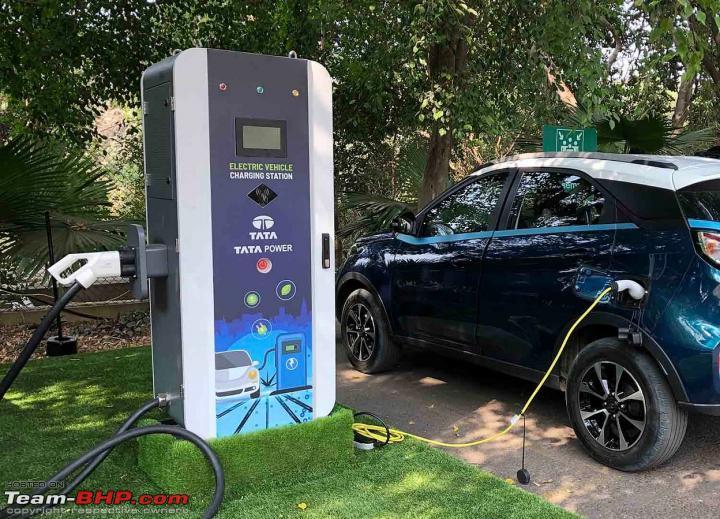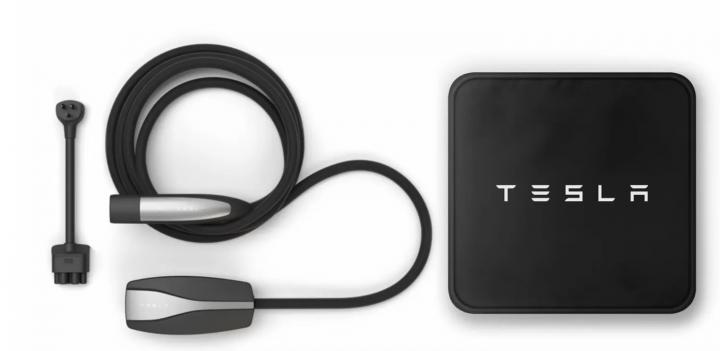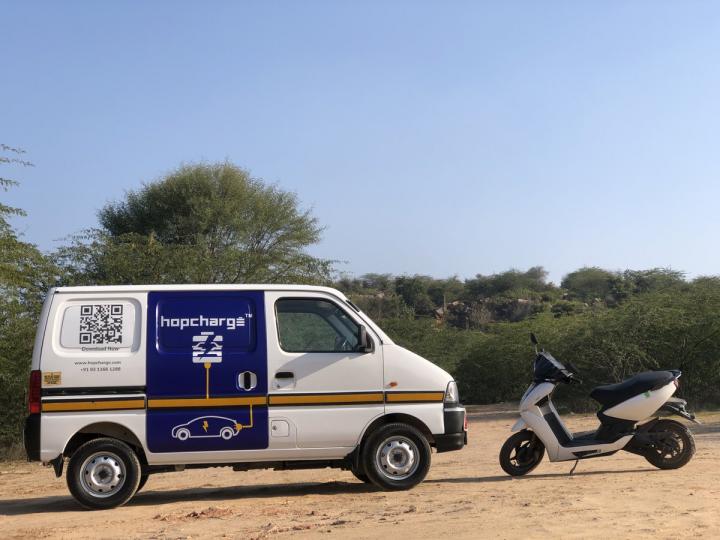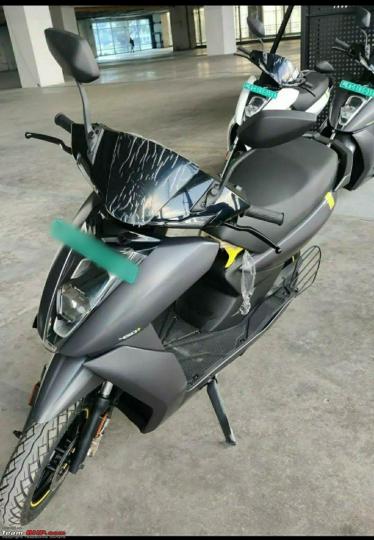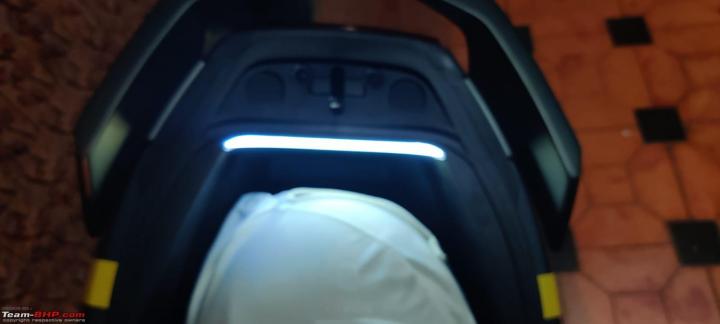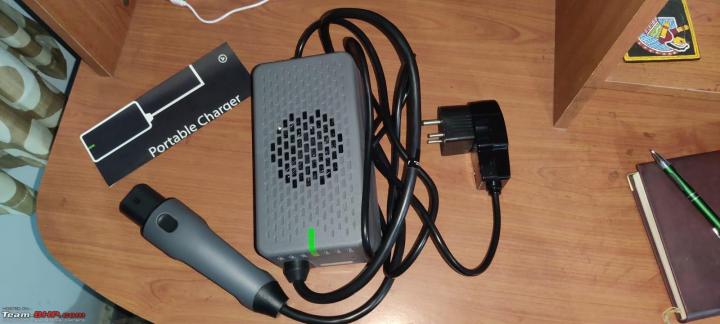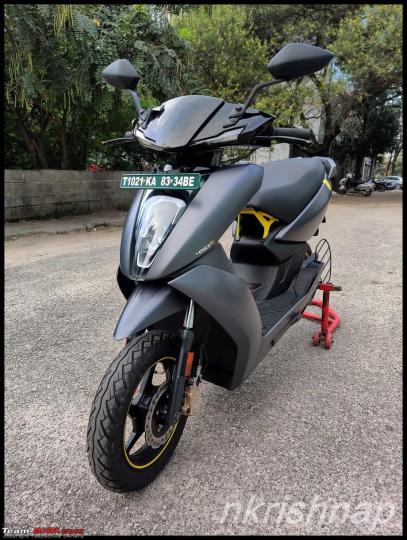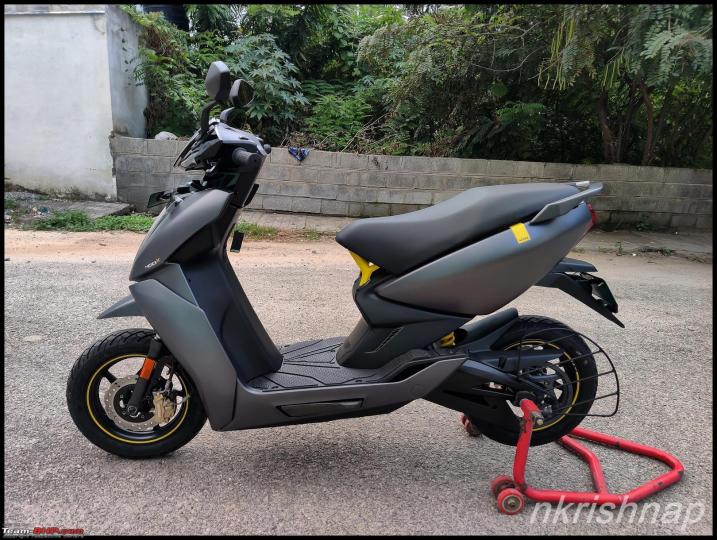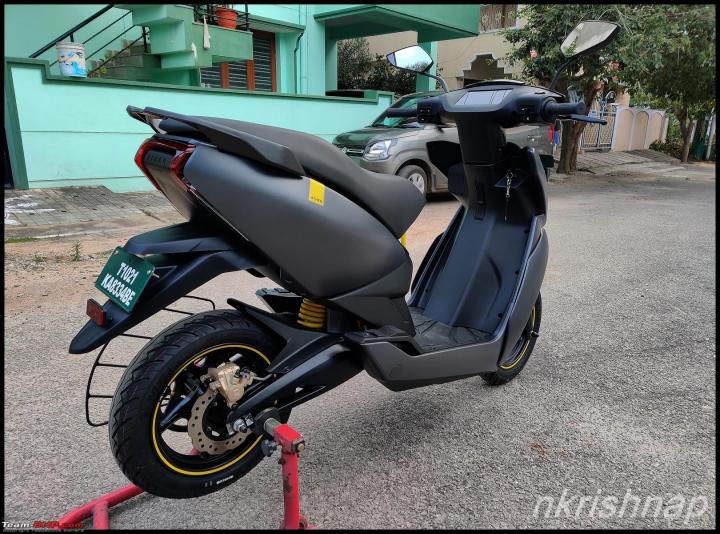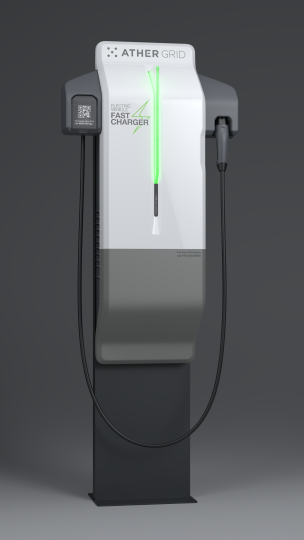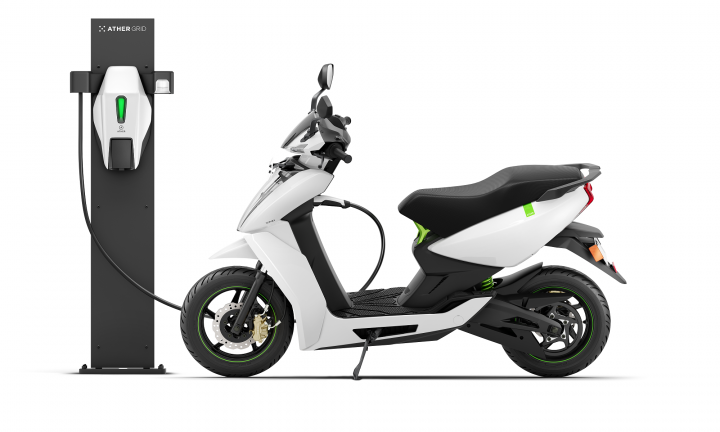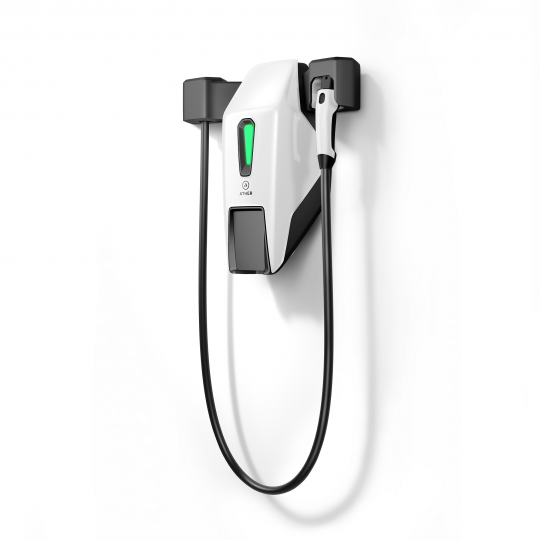News
Where do you see yourself charging your EV
Not everyone has the luxury of getting a charging point installed at their parking spot. Reasons could be many, including the majority of Indian car owners who park on the street!
GTO recently shared this with other enthusiasts.
I'd recently put up a thread on how the cheap & humble 15A plug will do for most EV owners. However, not everyone has the luxury of getting a charging point installed at their parking spot. Reasons could be many, including the majority of Indian car owners who park on the street!
So, where do you foresee your future EV being charged? Home is the most convenient as you charge while you sleep. Work will also be convenient, although it will pose challenges = not all employers will have charging spots installed, you'll have to get there early to claim the spot, companies will eventually start charging fees for it and more.
Many people are thinking of only fast-charging their EVs at public stations. That's totally fine, as long as you accept that fast-charging costs are already comparable to (or more expensive than) petrol in many cities of the USA. It won't be cheap; companies making giant investments in public chargers are doing it for the money. Even Tesla recommends that you charge at home and use fast charging only when doing inter-city trips. Fast-charging also negatively affects battery health, as compared to slow charging.
I've voted for home charging & have already gotten 8 15A plugs installed.

Here's what BHPian Keeleri_Achu had to say on the matter:
Home charging. I'm of the belief that more than range anxiety, it's the access to a charging port at parking slot which is going to be the determining factor for the majority of potential EV owners. Fast charging can help during long trips. But it significantly reduces the cost advantage if you rely it as a primary method of charging.
When I was in the US, I stayed right next to a Tesla supercharger station. Surprisingly, there was not a single Tesla owner in neither mine nor any of my friends' apartments. None of them had any dedicated slow charging slots. Mind you, I could see a lot of new Mercs and Beemers. So I don't think it was affordability that deterred those guys from switching to EVs.
Last month I was visiting my cousin who's at Chennai. She is staying at a rather large apartment community (1700+ units). Yet, there wasn't a single charging point installed in the community. Unsurprisingly, I spotted only a fraction of EVs in Chennai compared to what I spot in a tier 3 city like my hometown.
Here's what BHPian Shreyans_Jain had to say on the matter:
Home charging.
I have already developed the required infrastructure for this. I have had my sanctioned load doubled to easily accommodate 7 or 11kw AC chargers. I’ve had multiple 15amp points installed in my driveways. And I have a 10kw grid tied solar plant operational on my roof. Green mobility can’t come soon enough.
Here's what BHPian ADI7YAK had to say on the matter:
Voted for Home. Most EVs will be charged at home for at least 80% to 90% and much more for those who don't go on road trips, unlike me. I'll prove my point with data collected over 75k km of driving.
Here's what BHPian MadinMumbai had to say on the matter:
I have question for the governments and the overall attitude towards electricity consumption in India. Over the years we have made electricity consumption into some kind of 'sin' and electricity bills are higher per unit for those who consume more. Possibly a necessity when we had acute power shortages but no longer the case now. Yet there seems to be an active punishment doled out to larger consumers. Will there be a change in government perception on this account?
So while the transport minister might advocate going electric the power minister might see this as more $$$$$$ from higher penal rates. A self defeating circle of indigenous brilliance.
Read BHPian comments for more insights and information.
News
Tesla to stop offering home chargers with its cars
The Level 2 home charger from Tesla is now available for US$ 400, while the basic Level 1 charging unit is offered at US$ 275.
Tesla will stop offering charging equipment as standard with its vehicles. Going forward, customers of Tesla will either have to purchase the home-charging equipment separately or make use of the brand's supercharging network.
Tesla CEO, Elon Musk took to Twitter to announce the same, while blaming "low usage statistics" as the reason for its discontinuation.
Every electric vehicle produced until 2022 has been offered with a home-charging set as part of its standard equipment. Until recently, Tesla cars came with dual-voltage portable (mobile) chargers. However, the American EV maker has now discontinued the practice, forcing customers to make use of its public charging network or pay extra for a home charger.
Tesla has now reduced the prices of its home-charging station by US$75. The Level 2 home charger from Tesla is now available for US$ 400, while the basic Level 1 charging unit is offered at US$ 275.
Source: Electrek
- Tags:
- Indian
- Charging
- International
News
Ola Electric partners with StoreDot for extreme fast-charging tech
StoreDot's XFC technology is capable of charging from 0-100% in just 5 minutes.
Ola Electric has partnered with Israel-based battery technology company StoreDot to bring extreme fast charging technology to India.
StoreDot's extreme fast charging (XFC) technology is said to be the future of battery technology. It is capable of charging from 0-100% in just 5 minutes.
Under the new deal, Ola Electric will get access to XFC technology. It is part of the company's larger plan to ramp up its R&D in advanced cell chemistry and manufacturing.
StoreDot plans to start mass production of its XFC batteries in the next couple of years. The company is also developing a 2-minute charge technology that could be rolled out in the next 10 years.
- Tags:
- Indian
- Ola Electric
- Charging
- battery
News
Hopcharge brings EV fast-charging to your doorstep
The company now plans to deploy Hopcharge across all major metropolitan cities
Hopcharge has launched an on-demand, doorstep, EV fast-charging service in Gurgaon.
Having completed a pilot run in parts of Gurgaon, the company now plans to deploy Hopcharge across all major metropolitan cities in the coming months.
Hopcharge aims to address the challenges of unavailability of charging facilities, slow charging at home and productive time being consumed to charge vehicles by deploying its patented modular rapid charging systems. It is said to offer a virtual energy cloud for EV owners, which synchronizes with the grid to balance the supply and demand of energy.
The company offers multiple ad hoc and subscription models like HopchargeX and Hopcharge Xpresso. Customers can book the on-demand charging service through an Android or iOS app.
News
Buying and owning the Ather 450 Plus electric scooter
The scooter is exceptionally well put together. There have been no unwanted creaks and vibrations from any part on both good as well as bad roads.
BHPian WhiskeyTangoFox recently shared this with other enthusiasts.
Hello everyone! I'm sure I'm a little late to the party with regard to Ather reviews, but I've noticed that there are a plethora of reviews on the Ather 450x, but there are hardly any on the 450 Plus. So I'm here to give you a detailed review on the buying experience, the difference between the two variants, all the nitty gritties about owning an Ather (subscription plans and service etc. etc.) and my experience with owning it for about a month now.
The reason for purchase:
Right, so let me begin with why I chose the Ather. Rewind back to 2021, we decided to transition to EVs because of rising fuel and maintenance costs. We decided to replace our two cars, a 2013 Verna and a 2017 Kwid. Long story short, we replaced the former with an MG ZS and were looking for a replacement for the Kwid. If you'd like to read more about the MG's buying and ownership experience, I'll link it here.
The contenders:
Anyway, coming back to the Ather. Considering that I was the primary user of the Kwid and didn't particularly require a car, I wanted a two-wheeler that was cheap to run and maintain and have a decent amount of useful features. My commute was around 20 -30 kms every other day, and it would rarely exceed 40 - 50 kms. Hence, an EV was definitely in the books. I didn't consider the cheaper offerings because they seemed primarily targeted at the e-commerce segment and didn't really appeal to me. The main contenders were:
The Ather 450x or Ather 450 Plus:

The Ola S1 Pro:

The Revolt RV 400:

The Ultraviolette F77:

(Surprise Entry) The Odysse Evoqis:
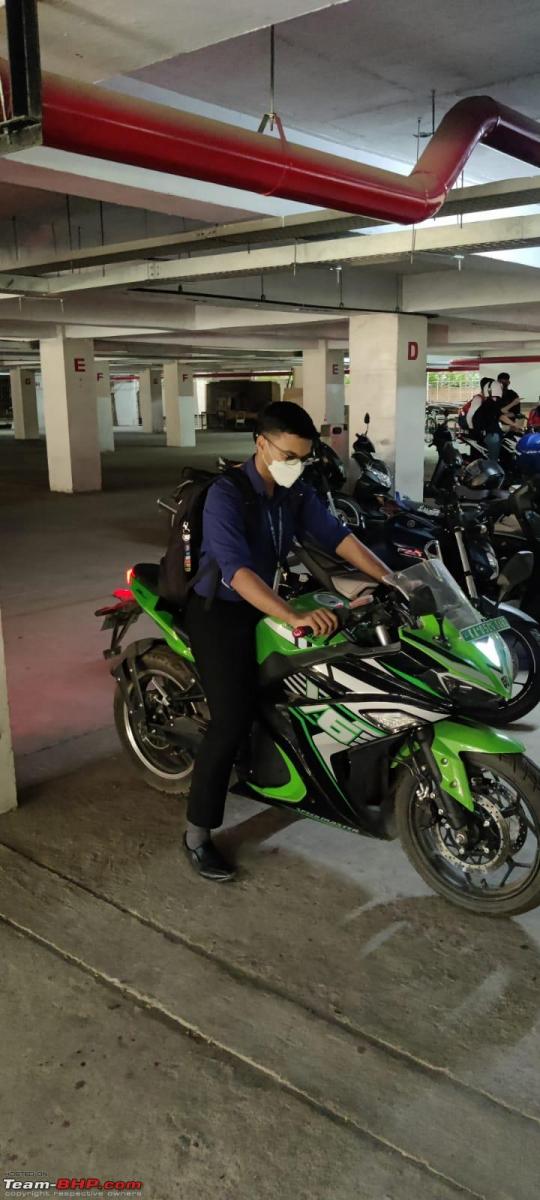
I'll keep this part brief; the Revolt didn't appeal too much because of the sub-par build quality, lack of proper service network and the small size for a motorcycle. I really liked the Ultraviolette, but there was no news about its launch, and I needed a replacement ASAP. A friend of mine had just recently purchased the Odysse Evoqis, and It looked from every angle like a Kawasaki Ninja. However, on doing some research, I found that it was just another cheap Chinese motorcycle that multiple small companies (*cough* Kabira Mobility *cough*) imported and claimed was their own. Although it looked so good, the build quality wasn't great, and I dropped the idea of purchasing it. The purchase window for the OLA S1 Pro was due to open only in January, and being a completely new product with no previous ownership reviews made me shy away. A good friend of mine had (and still continues to own) the first-gen Ather 450, and he seemed to love it. So I decided to go check it out. Here's a picture of his Ather 450:
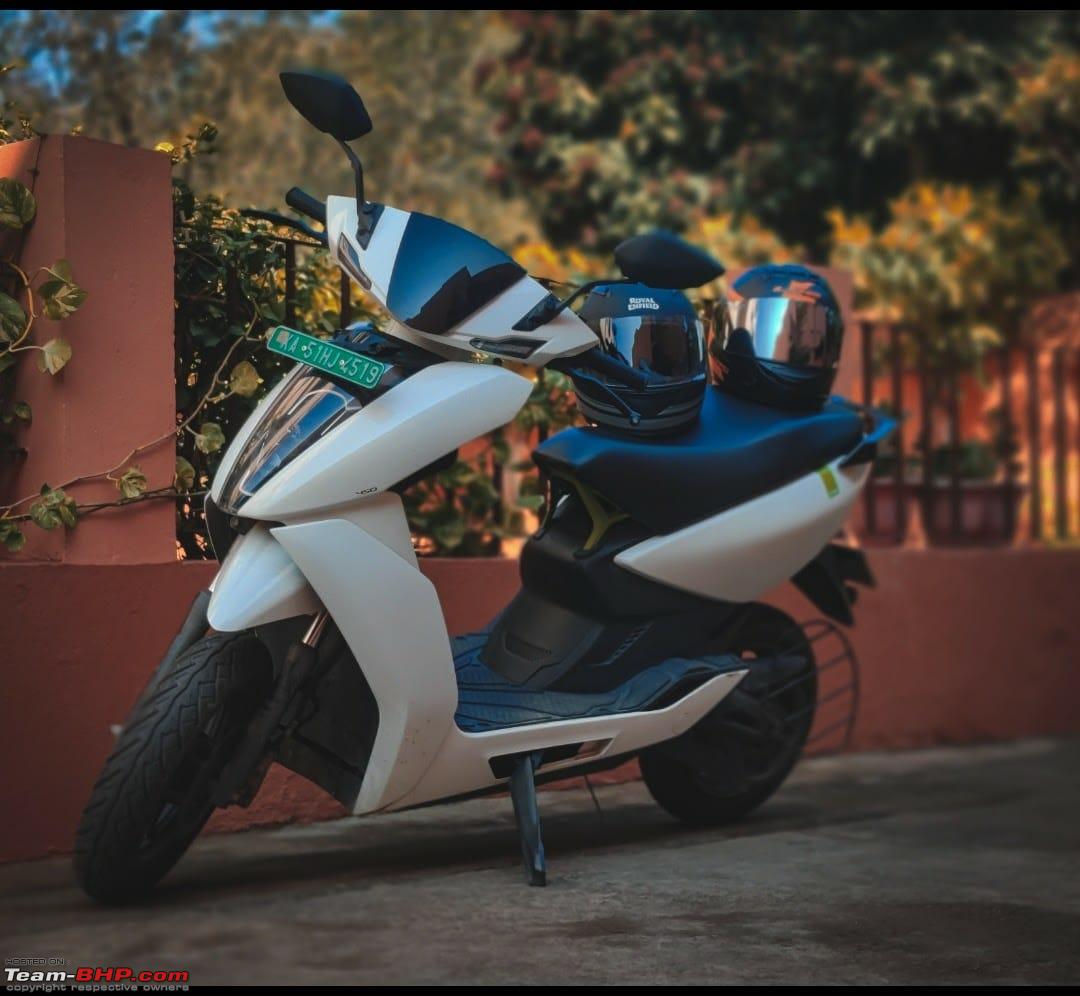
The buying experience:
First, I decided to call up Bengaluru dealerships and inquire about the exact road pricing. I first called up Ather JP Nagar and requested the pricing, and the associate said she would send it immediately, but she never did. Disappointed with this, I decided to call up Ather Indiranagar, who immediately sent me the invoices. We went to Ather Indiranagar to physically check out the scooter.
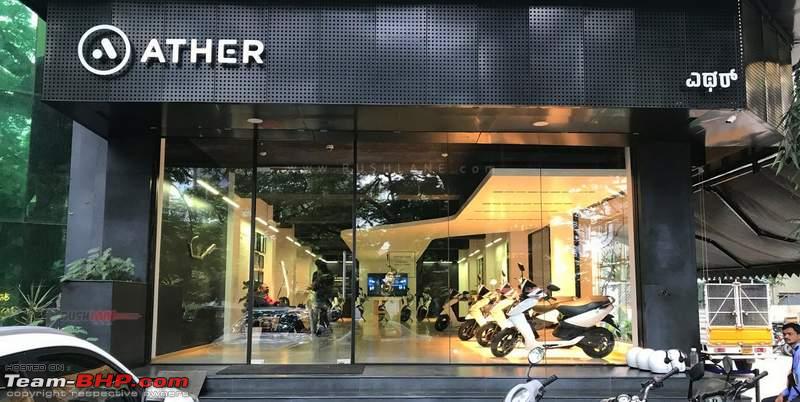
Ather Indiranagar.
The SA, Mr Akshay, explained everything about both variants and their related costs with great zeal. Definitely pleased with his whole method of handling the process. I'll give you a quick breakdown of both the vehicles. The Ather 450 Plus and the 450x are the same vehicles outside and even hardware-wise. The difference lies in certain features on the software side. Both the vehicles come with the same 2.9 kWh battery pack installed, but a slightly updated software helps the Ather 450x achieve a slightly higher range. The Ather 450x also gets a few additional features, such as BlueTooth support with call and music control, as well as the Warp Mode. Here's a link with the detailed information on the differences between the two.
The on-road price at the time (Including the FAME II Subsidy) was Rs. 1,29,301 for the Ather 450 Plus and Rs. 1,49,000 for the Ather 450x. I didn't need the call and music control, and the Rs. 20,000 premium for the 15km extra range didn't matter to me, so I decided to book the 450 Plus. We booked the 450 Plus at the dealership and paid the whole amount later at home. I chose not to get the Insurance from Digit, Ather's provider and purchased it from HDFC Ergo instead. We were told that due to the semiconductor shortage, it would take up to 45 days to deliver the vehicle, but they managed to deliver it in 30 days. Here are a few pictures from the delivery:
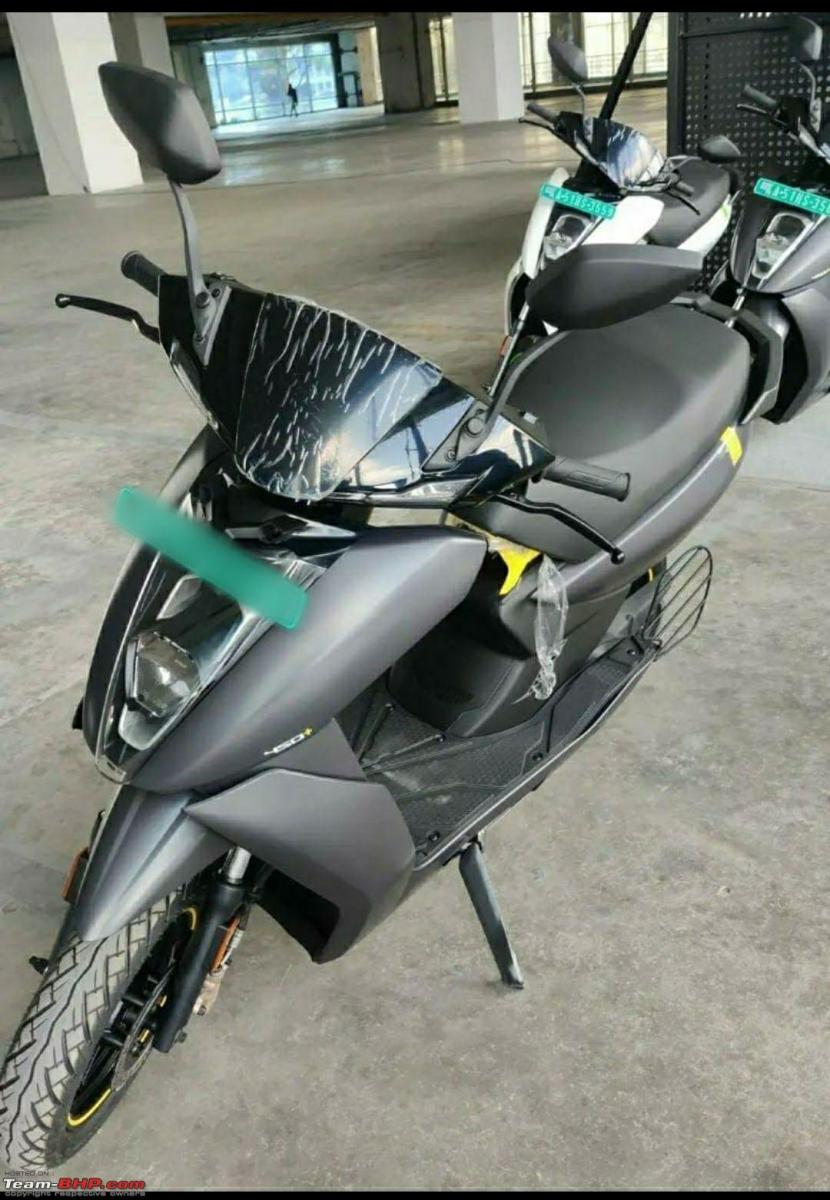
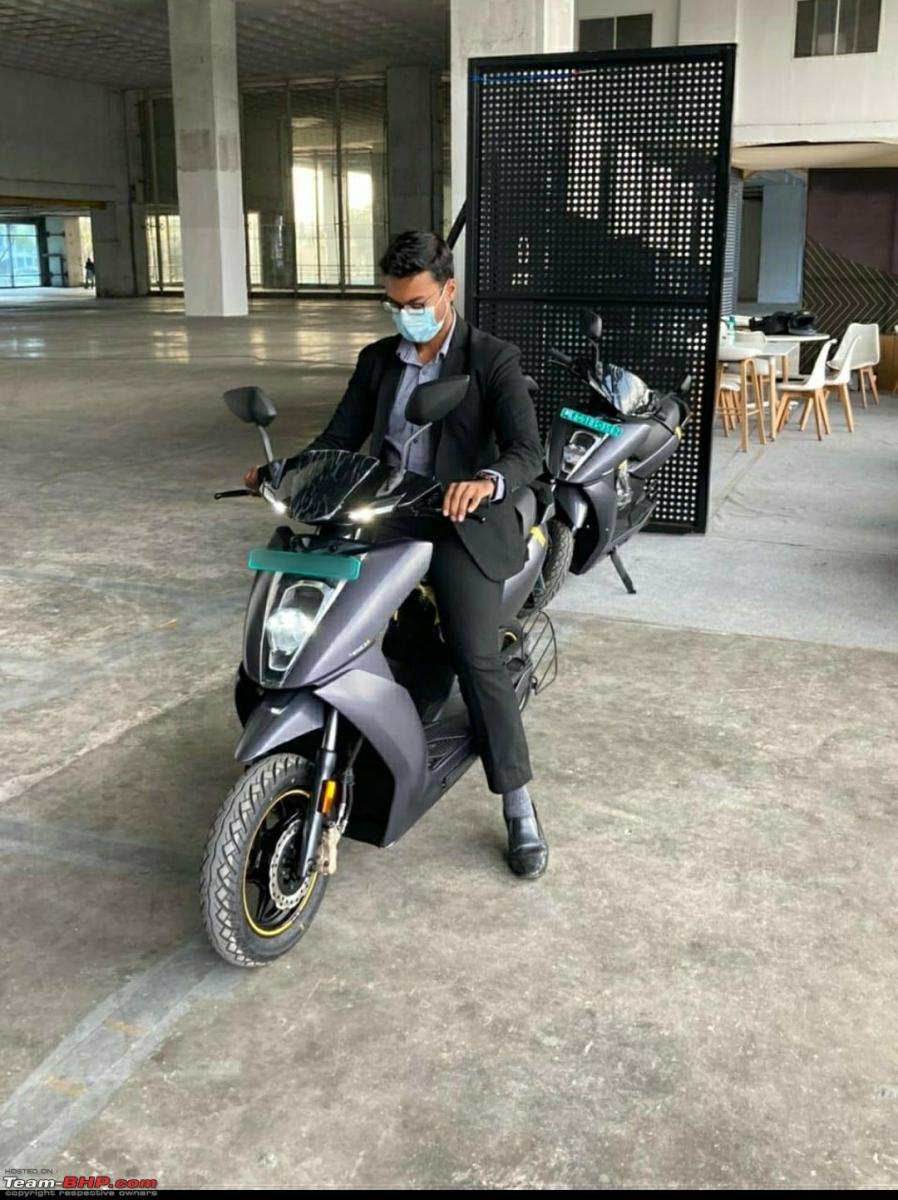
Ownership experience:
Right so it's been a little over two months since delivery, and I'm here to tell you about everything there is to know about owning an Ather. Unfortunately, I've only been able to clock about 60km because of Covid, but I have ridden it over all kinds of road surfaces at low and high speeds, so I'll give you an idea of what that's like.
The scooter and its features:
Firstly, coming to the build quality, absolutely no complaints. The scooter is exceptionally well put together. There have been no unwanted creaks and vibrations from any part on both good as well as bad roads. The ride quality is slightly on the stiffer side, and this does show on bad stretches of roads, but it does provide phenomenal handling dynamics, and it is ridiculously easy to just chuck it into a corner without worrying about it. It is an exceptionally well-balanced scooter and is great for zipping through traffic (The Ather is one of the few vehicles in India with a 50-50 weight balance. Plus the low centre of gravity helps xD). The boot space is more than adequate and fits my full face (Size Large) helmet, a copy of physical documents, the helmet sleeve, a microfibre cloth and a pair of riding gloves. It also has a very nice LED Light, which illuminates the space.
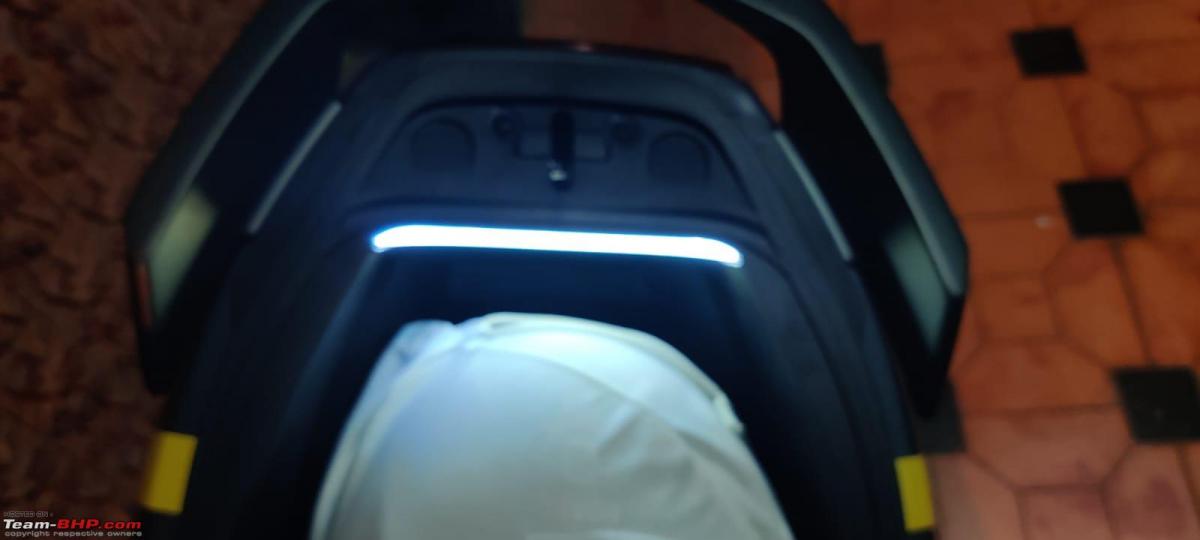
The boot LED light.
The brakes are great, although I do wish that the Ather had ABS because if you do brake really harshly, the rear wheel tends to lock up, but it isn't an issue for the most part. (The Ather has a Bybre Combined Braking System or CBS, which essentially means that when you pull the left brake lever, it activates both the front and rear brakes). The performance is absolutely excellent, it flies upto a speedo indicated 90 kmph on Sport mode. I also love sound that the motor makes (sounds like a spaceship to me).
Now coming to one of Ather's USPs, the dashboard. It is a 7-inch touchscreen system that is based on Android. It is very smooth to use and works well most of the time. It comes with a 4G sim embedded. I'll run you all through it in detail.
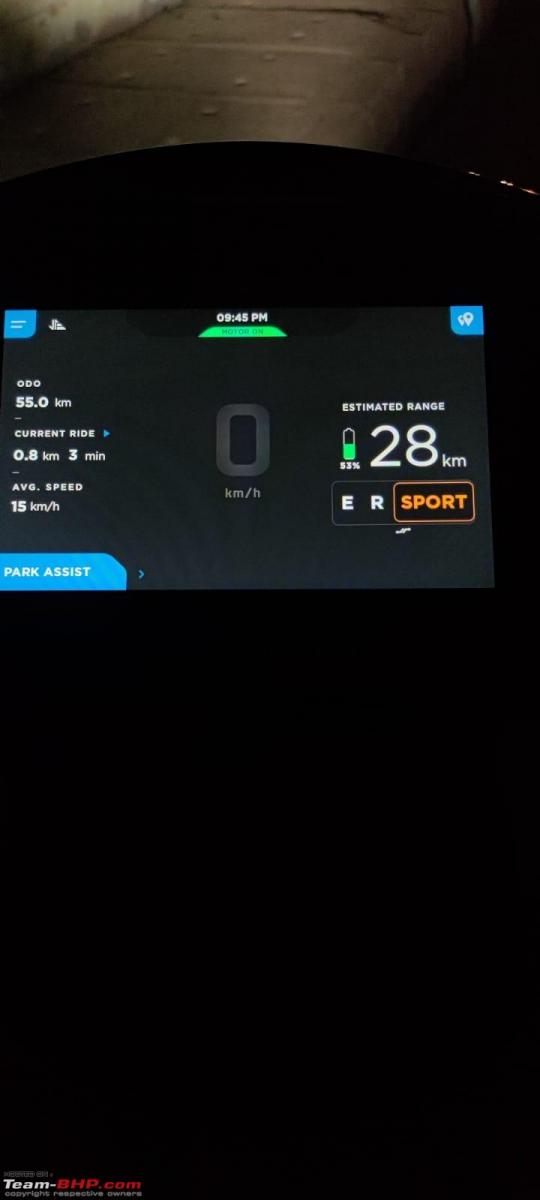
This is the main dashboard screen. It displays (from the top left, clockwise):
- The menu shortcut.
- The 4G signal strength.
- The time and any warning message from the sensors (I'll come to this in a bit).
- The navigation shortcut.
- The estimated range on different modes (this adapts based on your riding aggressiveness. (I'll again elaborate on this in a bit).
- The mode on which you are currently riding.
- The speedo.
- The park assist shortcut.
- The odo with the trip information.
The scooter has a plethora of sensors (43 to be exact) that monitor everything from battery temperature, health and charging to even whether the side stand is open. The following two pictures are the sensors indicating that the side stand is open and the kill switch is engaged. The motor will not turn on under these circumstances, and even if it is already on, it will shut off when the side stand is opened.
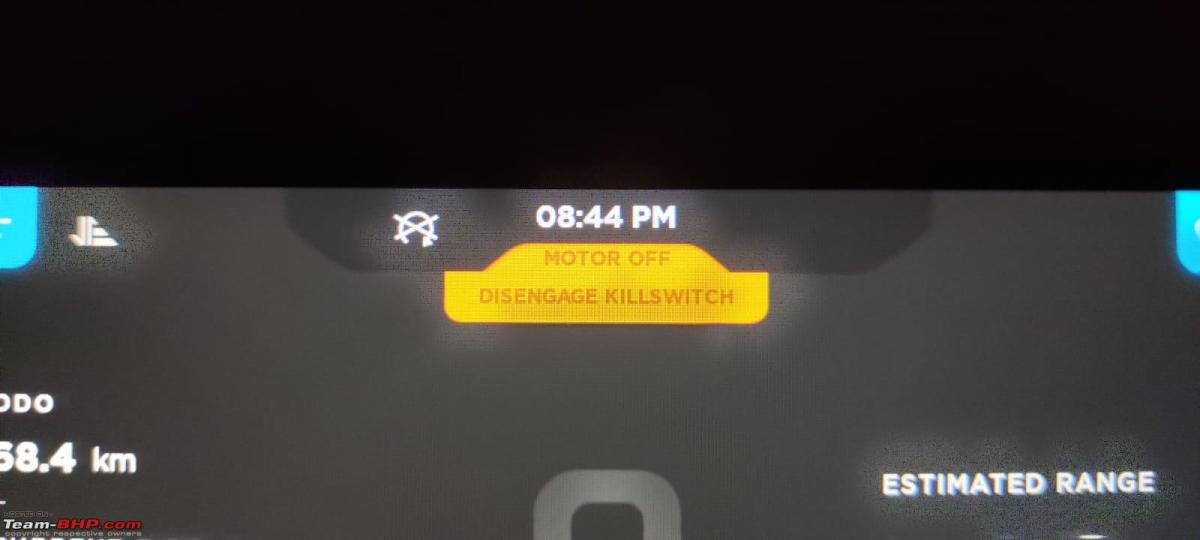
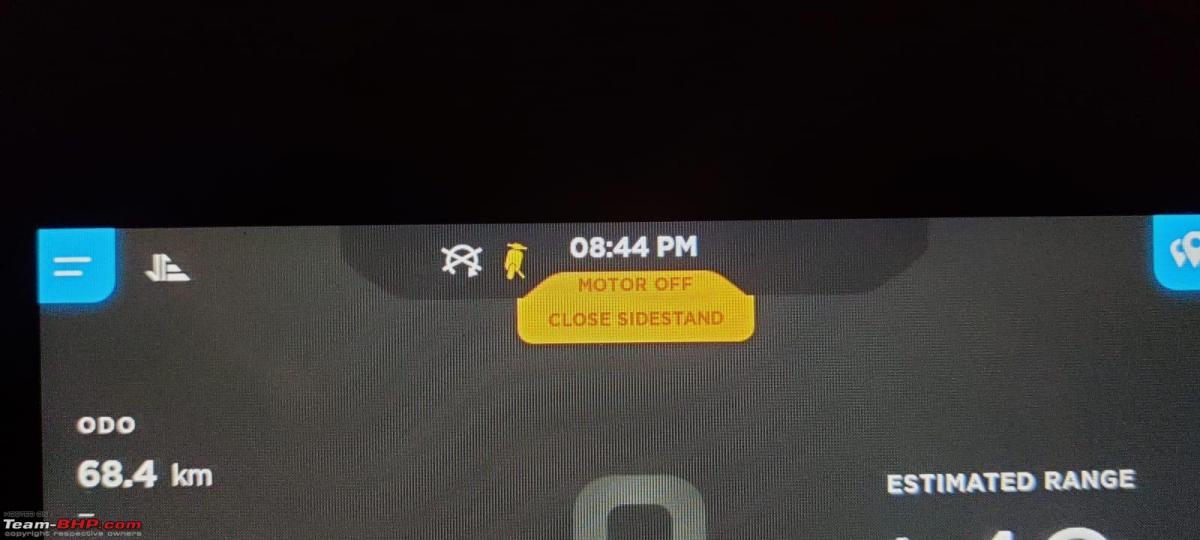
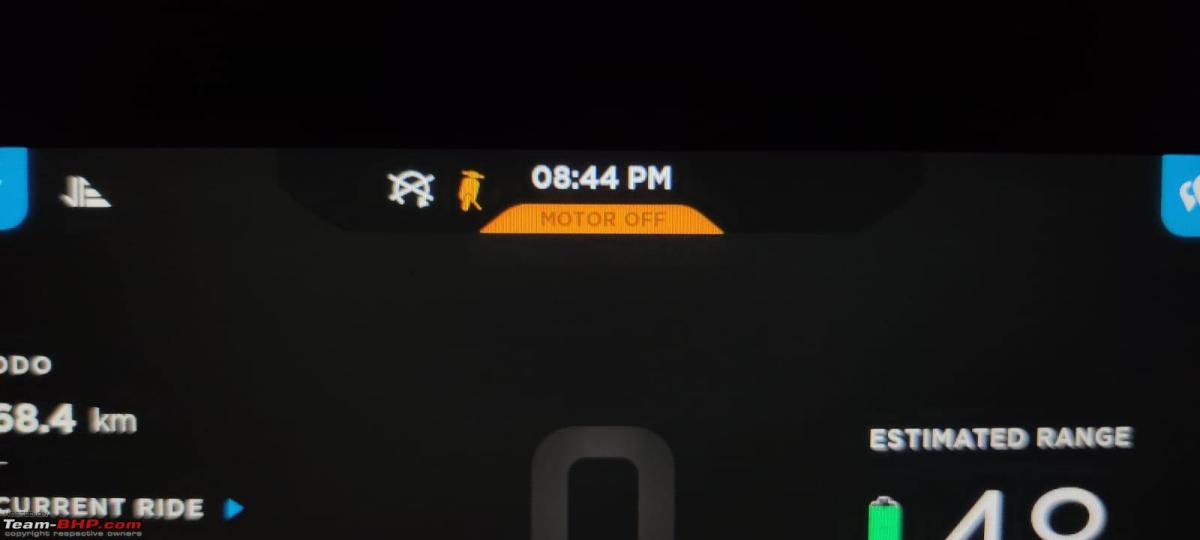
The navigation is powered by Google Maps and is great for the most part. You can also send the navigation data from the Ather App on your smartphone to the scooter:
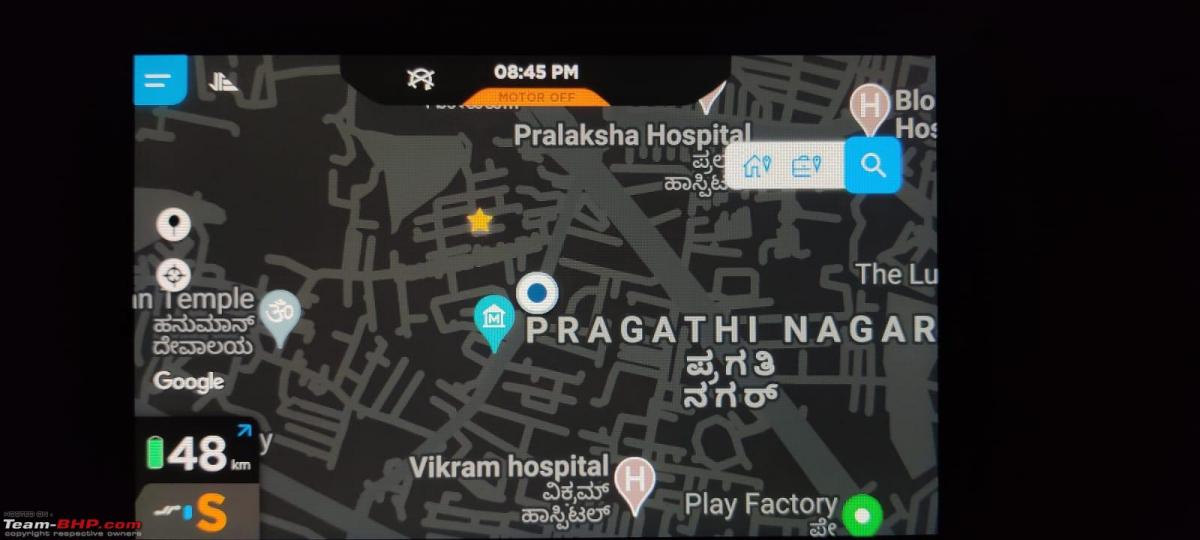
The menu has four main sub-menus:
- General, which displays the scooter info such as the VIN Number, Registration etc.
- Settings, where you can adjust screen brightness (I just leave it on Auto), the theme, you can turn off the indicators' sounds and the reversing sound. You can toggle the Auto Indicators, Guide me home lights,
- Realtime Efficiency, and go Incognito, which basically means that the scooter won't track any data.
- Errors, which will display messages if sensors detect a fault in the scooter.
- Documents, where you can store images of your DL, RC and Insurance or any other document you wish to carry.
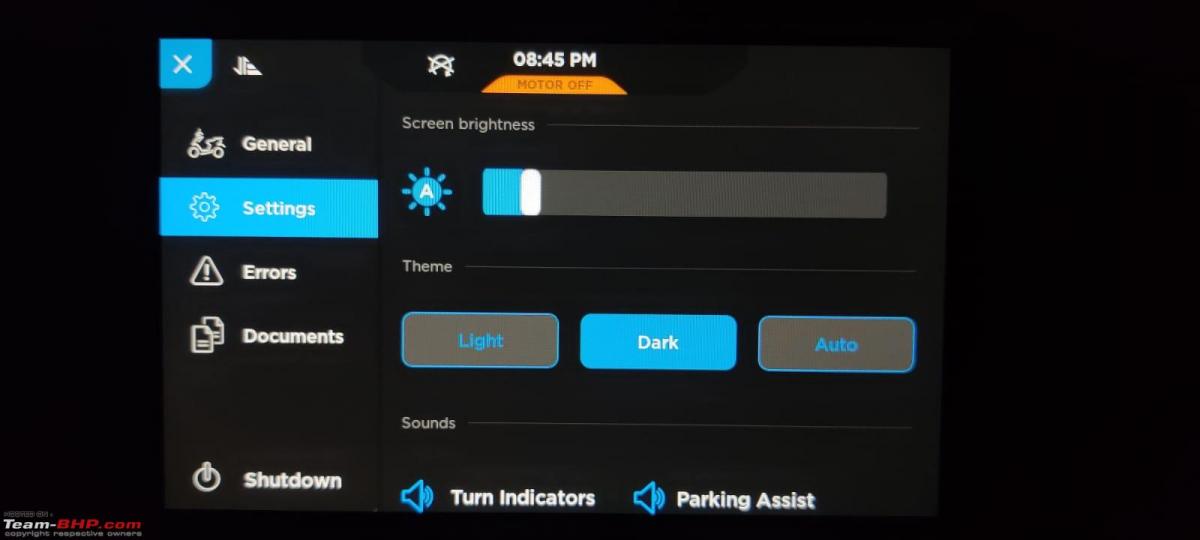
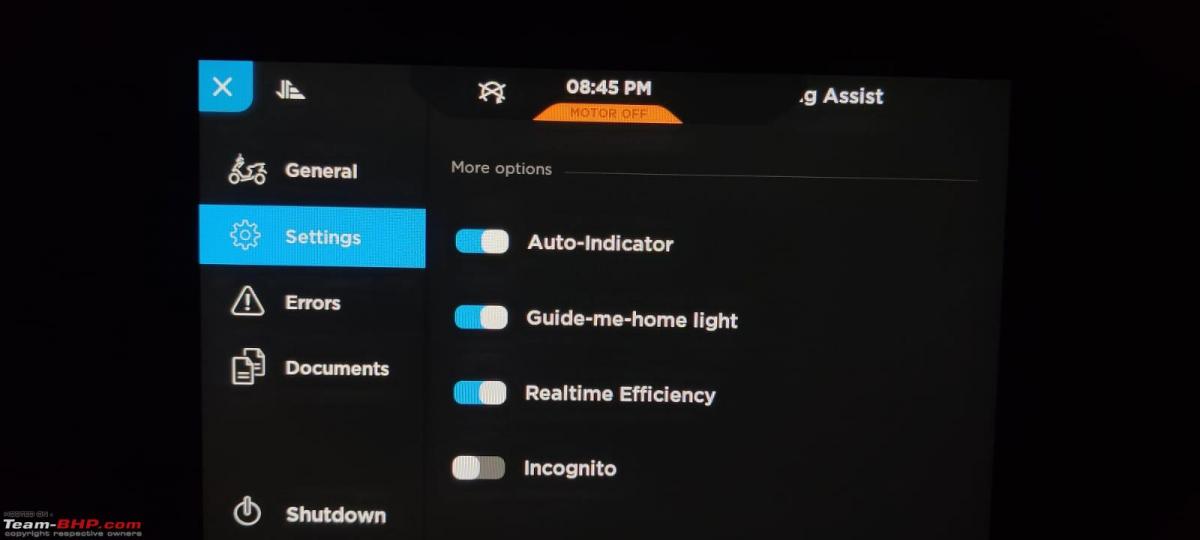
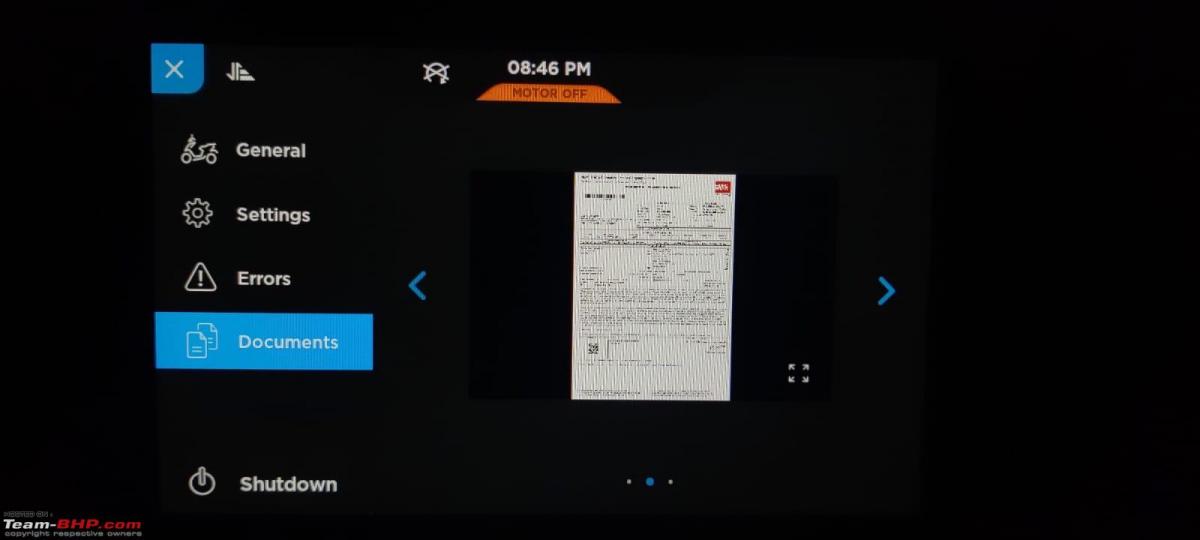
There is a difference between shutting down and turning off the scooter. Turning off is what you do when using the scooter every other day. Shutting down is when you aren't using the scooter for an extended period. This completely turns off all sensors that normally monitor the battery's health when the vehicle is turned off and the SIM.
The scooter also has a park assist feature wherein the scooter assists you in reversing (limits the speed to 2kmph) and can go forward up to 5kmph. The reverse feature is an absolute boon, and I use it all the time.
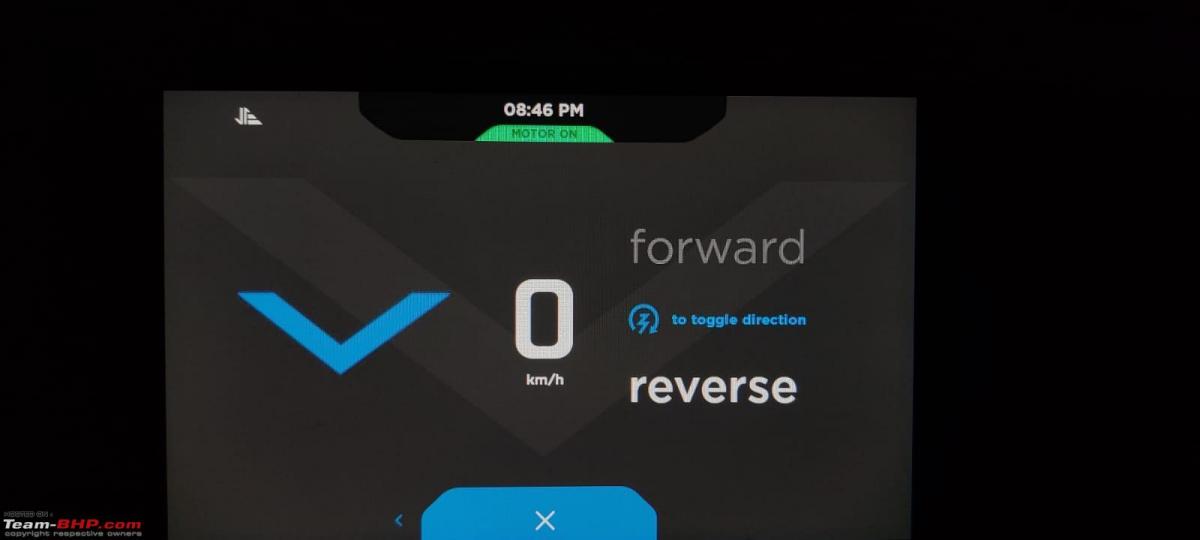
The lights:
The lights are great, they are all LED units, and they illuminate the road very well. They also look really good, in my opinion.


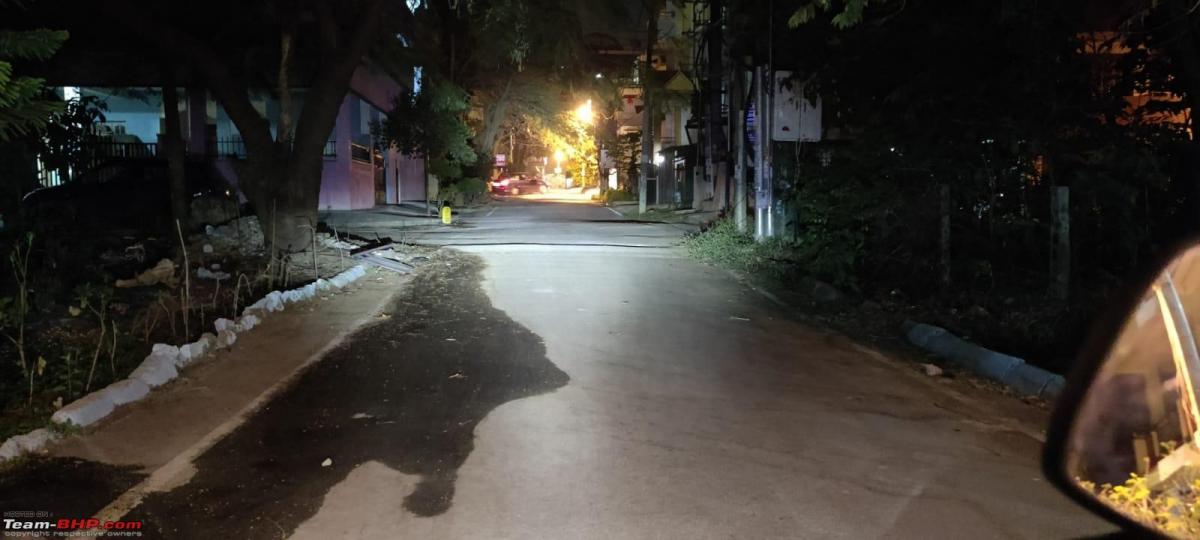
Headlight spread.
Charging, ange and running costs:
You have two home options to charge the scooter, the Ather Dot, which is a wall-mounted waterproof charger, and the Portable Charger. They both charge at the same speed, but the Ather Dot is mapped to only your scooter, meaning it cannot charge any other Ather, but this is not the case with the portable charger. I chose the portable charger. It will connect to any 15 amp or 5 amp socket. It takes a little over 5 hours for a 0 - 100 charge, and you can monitor the charging status from the Ather App on your phone. The charger will Auto cut off during voltage fluctuations, and once it reaches 100% so you can leave it overnight without worrying. The charger also locks into place when charging, and you cannot remove it. You also have fast chargers around the city, which you can find via the onboard navigation or the Ather App.
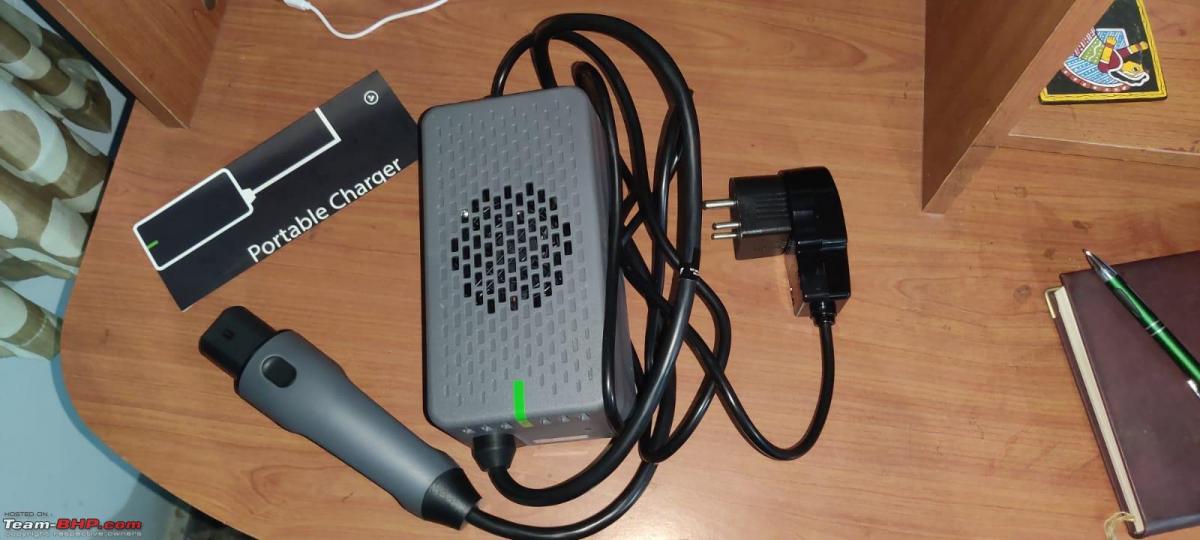
Portable charger.

Charging case.
The 450 Plus gives pretty much 70 km on a full charge on an average, but the scooter adapts over time, based on your riding aggressiveness as well as via software updates. Because of this, some owners have also been able to get 100+ kms of range.
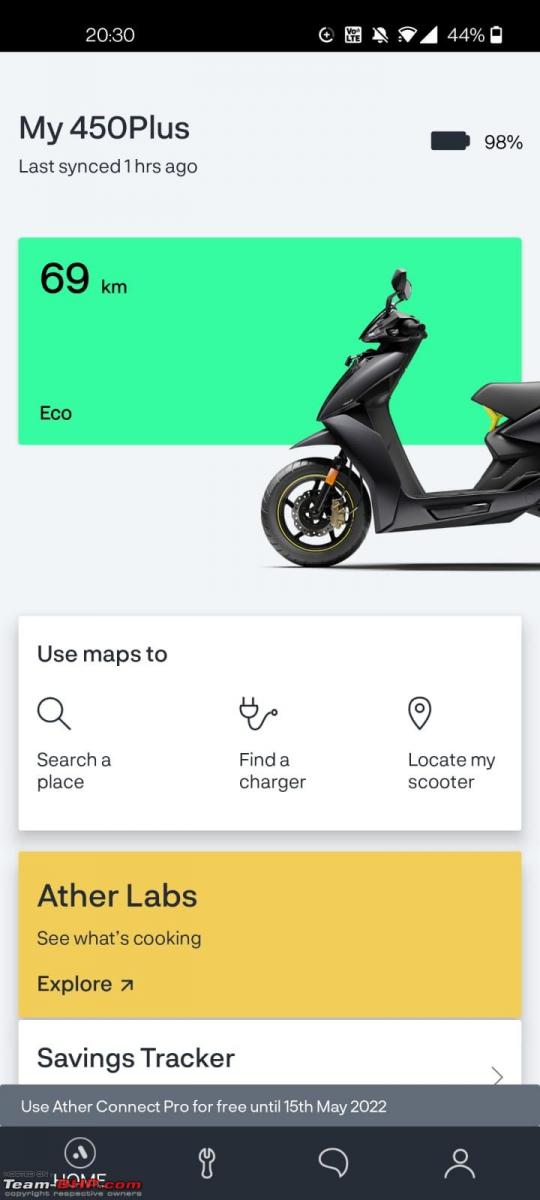
Ather app dashboard.
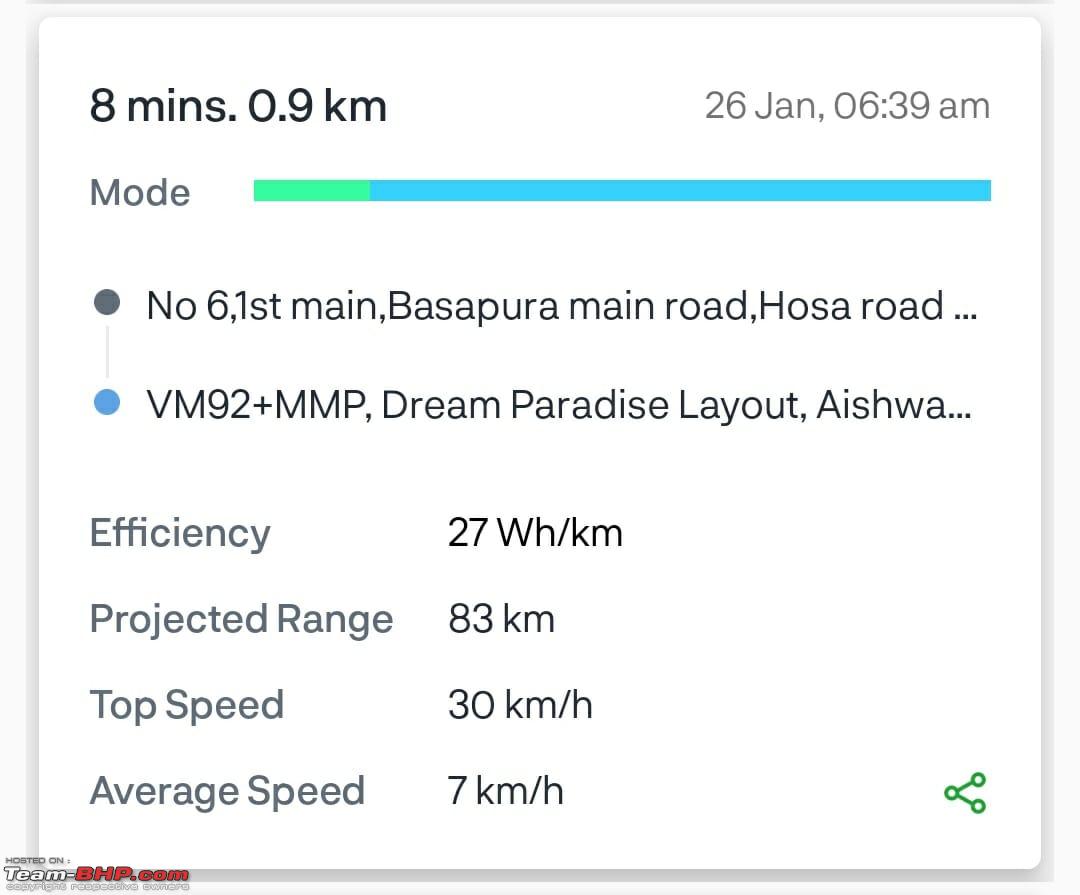
Efficient riding.
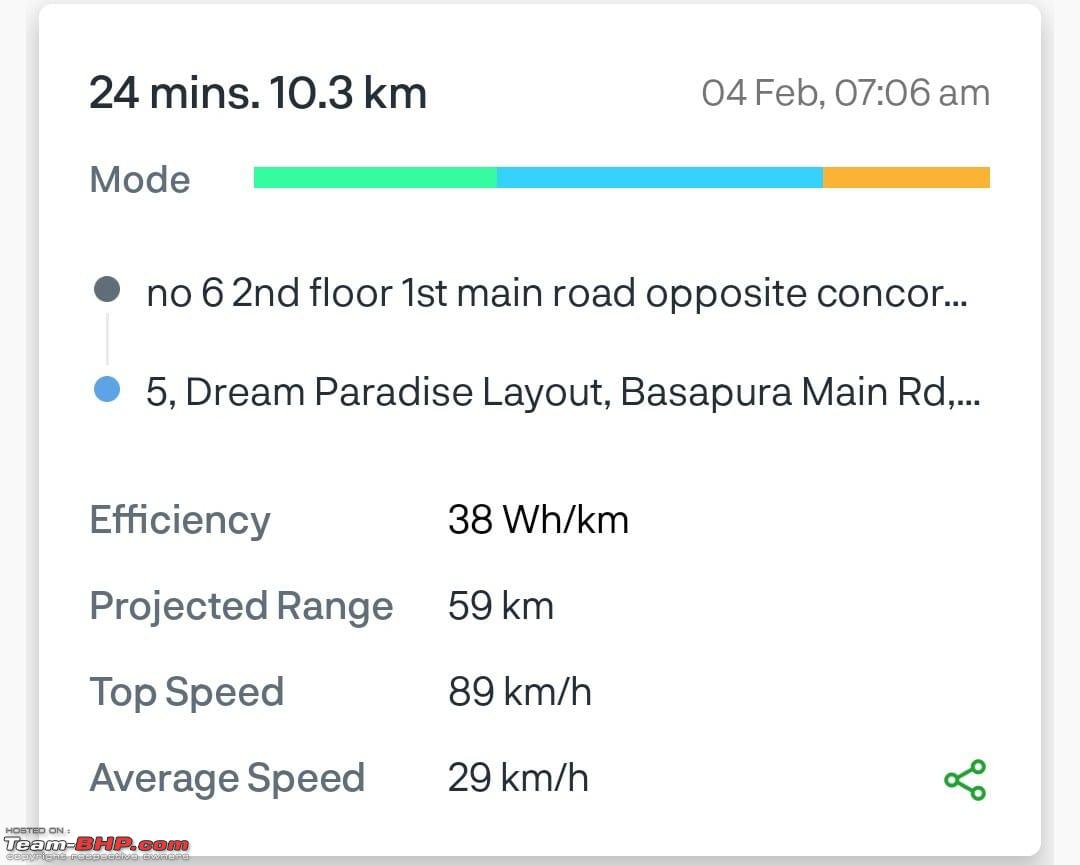
Aggressive driving.
Coming to ownership costs and a comparison with an ICE ccooter (I've taken the Honda Activa 6G here), I've worked out the cost for 5 years (600 km per month or 7200 km per year). Over the course of five years, the Ather will cost Rs. 11,000 for a total of 36,000 Km whereas an Activa will cost around Rs. 75,000 for the same distance.
Subscription plans - Additional cost (optional):
This is where things get a little dicey, but I'll tell you how to work around it. Ather has a subscription model for both data as well as service. I'll start with data. Ather offers two plans, Connect Lite and Connect Pro.
They include the following:

For service, they have the Service Lite and the Service Pro:

If you absolutely want to get the features that Connect Pro offers (it is free till May 2022 for all users), then you will have to shell out Rs. 700 per quarter. If you're like me and are not too concerned about them and just want navigation and OTA updates, I'd get the Ather Connect Lite. With regard to service, you can purchase either one of the plans (I'd again recommend the Lite plan unless you absolutely cannot take the scooter yourself to the service centre) just before the 5000 km mark, essentially making the service cost only Rs. 800. If you don't want any connect features, you can do that too and use the scooter as a regular scooter.
In conclusion, It's a fantastic scooter, and I absolutely love it and can't wait to go on longer journeys with it. I hope I've helped you make your decision if you are considering one of these vehicles. Cheers!
Check out BHPian comments for more insights and information.
News
Are plug-in hybrids a good option in India alongside pure EVs
Isn't a PHEV (with decent pure EV range like 70 km) a good option for consumers (not car builders) to leverage better of both worlds?
BHPian Yodakank recently shared this with other enthusiasts.
Folks, this is an apt discussion now as many PHEVs have reached a range of 60-70 km on pure electric charge where you can plug in and charge at home almost every day if need be. Only for highways and other long drives we can switch to fossil fuels until the charging infrastructure in India reaches a scale where range anxiety is a thing of past for EV led long drives. I heard great reviews on the 2022 Hyundai Tucson's PHEV model. I really hope they launch that model in India. Are they are other PHEVs SUV models that BHPians can recommend?
What would be your recommendation for consumers who do bulk of city driving but less frequent long rides and are in range anxiety all the time when it comes to pure EV for long drives. The infra is just getting built up and as more cars hit the market am not sure the fledgling infra will scale linearly. Isn't a PHEV (with decent pure EV range like 70 km) a good option for consumers (not car builders) to leverage better of both worlds? It is a good in between before the inevitable shift to pure EVs. Eventually consumers will shift to long range pure EVs not just for convenience but for economics as well where EVs are beating the fossil fuels hands down and till then enjoy both with PHEV.
Here's what BHPian kosjam had to say on the matter:
Had it been the teens (2013-17) PHEVs would have been the ideal stop gap for getting people ready for EVs. But now with EVs on the cusp of going mainstream, it would actually be a step backward, as it would give the car makers an easy way out, rather than putting the effort required to get the charging infrastructure in place (granted, they are not the main drivers of infrastructure build up).
Nor would they invest in getting better at an improved BMS and other related battery tech, if they could just get by with slapping a smallish battery and calling their vehicle a hybrid.If you can afford it, the best combo is having 2 cars, the BEV for city runs and an ICE for the long rides. But even if you don't want two cars, and you do not have very frequent long rides, any EV out there today, including the Nexon, is more than adequate for doing city runs, and small long rides (with range anxiety) but if planned properly, it is doable. Plenty of fellow BHPians have done it (elsewhere on the forum). The infrequent long distance rides can be handled by Zoomcar or the like.
Coming to the second part of your question. Yes, it would definitely be a good stopgap for customers, but bear in mind, with both technologies in the vehicle, the cost of such a vehicle would be the same as a competent BEV in the first place, and secondly, the infra for vehicle charging is picking up in a big way, with IOC and others leading the way, not to mention plenty of private startups. It is like the early 2010-12 when my car was the only private vehicle in a CNG station. But now most of the time, the private cars dominate the CNG pump. Agreed its not a like for like comparison, but what I'm trying to imply is that the BEV scene is quite nascent in India, but its poised to grow by leaps and bounds with the current government actively promoting EVs.
We humans tend to think of solution timelines on the basis of our lives, 5 years is a significant chunk of life, for instance. But on a country wide level, 5 years isn't that big a time line, comparatively. So while we might think that the infrastructure growth is happening at a glacial pace, it actually is blisteringly fast, taken on the level of a country. For example, what we see as progress wrt Tesla in the USA, its journey started in 2009 with the roadster, and it took atleast 8 years with the Model 3 coming out in 2017, for Tesla to be called mainstream.
Patience is the keyword. That's all it takes.
Check out BHPian comments for more insights and information.
News
Ownership review: 2000 kms with my Ather 450X e-scooter
Fit and finish no where near to what it was during launch. Quality has gone downhill.
BHPian nkrishnap recently shared this with other enthusiasts.
An Ather 450X comes home in Space Grey Matte colour:
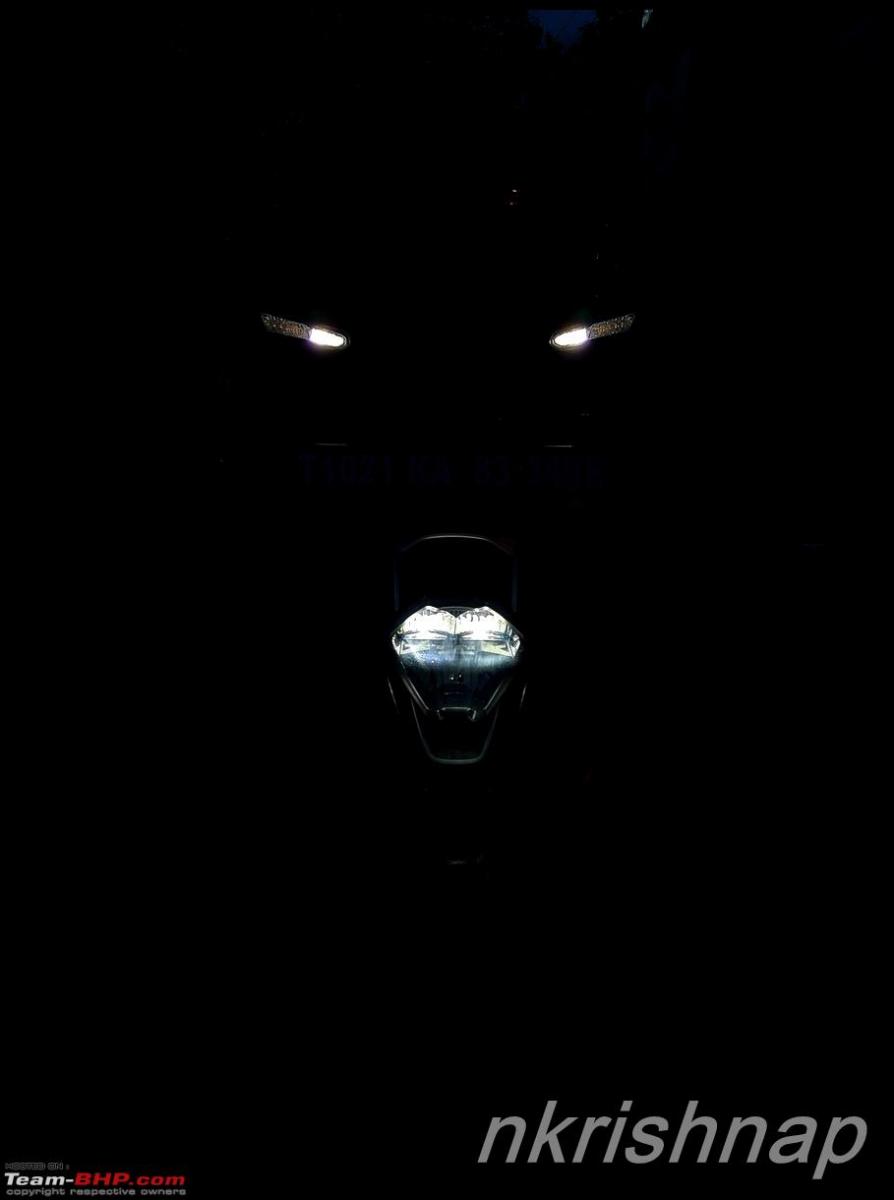
Positives:
- Nimble Handling.
- Strong Brakes.
- Comfortable riding position.
- Proven until now with no major mechanical issues (though some issues have been documented, none that will knock the scooter off the list).
- Nice lovely matte finish paint.
- Decent Range (would have loved 50% more).
- Strong acceleration in Sports and Warp mode.
Negatives:
- Fit and finish no where near to what it was during launch. Quality has gone downhill.
- Dealership experience, horrendous at best.
- Lack of color options (would have preferred the range like OLA is offering).
- Rough edges around panels, again downward trend from Ather.
- Lack of faster charging (though the Ather grid is there, would have preferred a faster charging).
- Mirrors are of little use, size and position not suitable for all riders with varying heights (again the quality of mirror mounts is below average, it was better when it was launched).
- No parking brake or hold, that you get in the regular scooters like Ntorq, Jupiter, etc. comes very handy at the signals and parking where the road has incline or slope.
Prologue:
The rising fuel costs were becoming a worry especially on the NTorq as the running also increased and the mileage isn't great either. I was contemplating on an electric scooter early April 2021, however lockdown was imposed for the 2nd wave of Covid-19 Virus. This meant only one thing, all plans on vehicles put on hold.
I had a fall at workplace and ACL tear was the end result. I underwent the ACL reconstruction surgery on the 28th of July 2021 and the rehab followed. Post 60 days of the surgery, the knee seems to holding up and the green signal from the doctor to ride the scooter was a blessing. Now the discussion of picking up an electric started all over again. More on why the Ather 450X in the subsequent posts
Customary Delivery Picture:
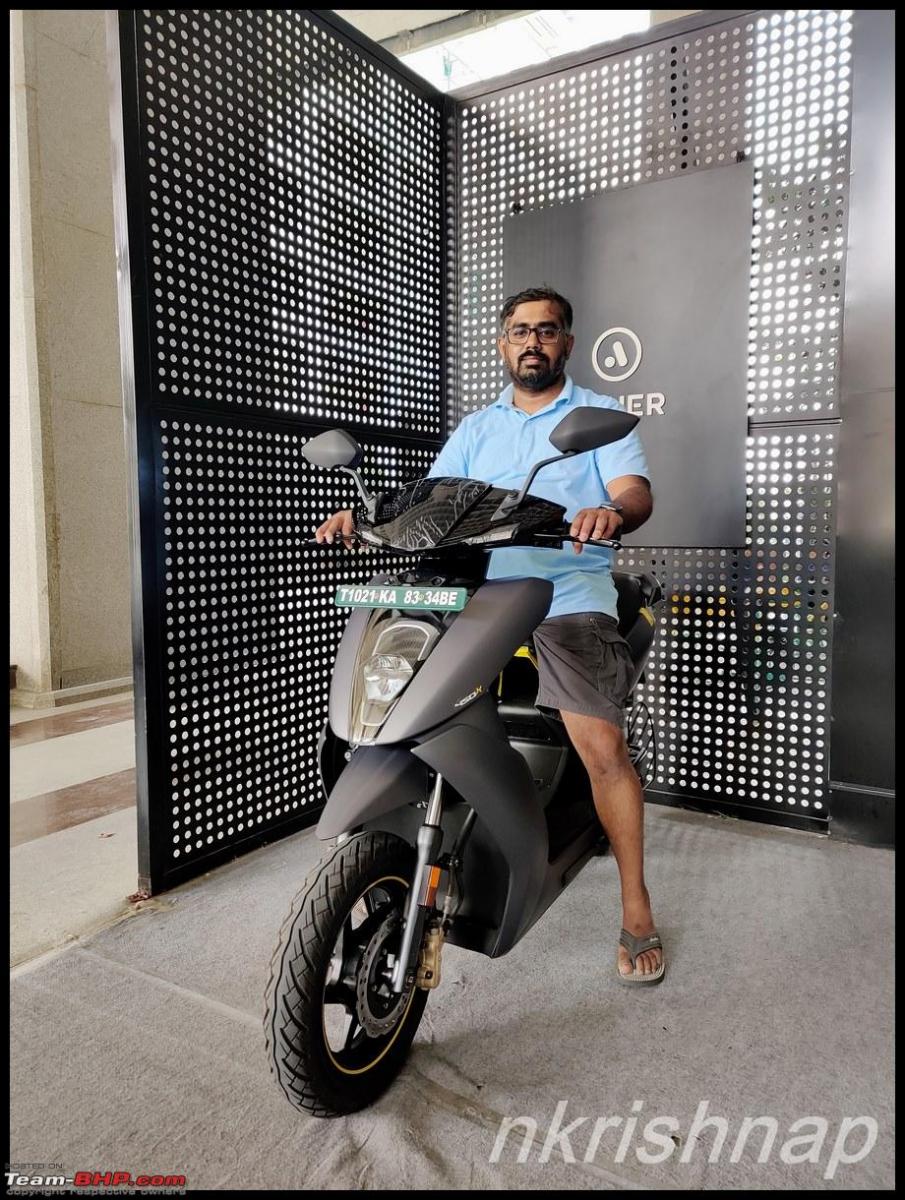
Technical Specifications:
Model: Ather 450X.
Peak power: 6 kWh.
Max torque: 26 Nm.
Top speed: 80 kmph.
Ride mode and range:
- Eco - 85 kms.
- Ride - 70 kms.
- Sport - 60 kms.
- Warp - 50 kms.
Range with standard test condition (Indian Drive Cycle as they call it) is claimed to be 116 kms. This is more for academic purpose than anything else as not many would be willing to ride the scooter to get 116 kms in a charge all the time.
Charger type: Ather Dot or portable charger.
Battery type & capacity: Lithium Ion with 2.9 kWh.
Transmission type: Belt drive.
Rim size: Front 12 inch with 2.15 inches width and Rear 12 inch with 2.5" width. Both front and rear rim width should have been the same, though this a minor difference.
Tyre size: 90/90 R12 tubeless for both front and rear.
Front brakes: 200 mm dia with combined braking system, hydraulically actuated triple piston caliper.
Rear brakes: 190 mm dia with hydraulically actuated with single piston caliper.
Front suspension: Telescopic forks.
Rear suspension: Mono shocks.
Lights: Ather has all LED lights for Headlight, Tail Lights, indicators, position lamps.
Weight: 108 kgs.
Boot capacity: 22 Litres.
Connectivity: 4G LTE.
Bluetooth: Bluetooth 4.2.
Additional features:
- OTA updates.
- Navigation with display on the dashboard.
- Side stand sensor.
- Auto indicator off.
- Guide me home lights.
- Mobile app connectivity.
- Ride Stats, Push Navigation, Live Location, Vehicle state tracking, Music & Call Control via the app.
With the knee getting better and the doctor approving me to ride the scooter again, the odo started climbing up pretty quick. The rising petrol prices did not help one bit and it started pinching the pocket big time. Then came the thought of buying an EV to cut costs and ended up with question of which one to buy. The cheap Chinese bolt on ones were ruled out instantly. Never been a fan of Bajaj vehicles, so the Chetak was not even considered. This left me with either the Ather 450X or the TVS iCube.
Observations on the TVS iCube:
During one of the visits to Bharath TVS for picking up spares for NTorq and my RTR, too the iCube for a quick spin. iCube looks more like a dressed up Jupiter. Feels similar to ride to the Jupiter. It is very quiet. It has economy and sport mode (if I recall correctly). The range in Eco mode is claimed at 75 kms and Sport with 50 kms. The acceleration is decent enough for the city and the range I am certainly not sure as to what expect in the long run. Rough on road cost is around 1.24 lakhs including charger. The cost is in favour of the TVS but the longevity, battery performance and motor durability is still unknown. So the iCube is on hold.
Observations on the Ather 450X:
I had a chance to ride our Teambhpian's Hemanth's Ather few months back. It feels just like the scooter fell into place and felt this is it. Then another friend pick up the Ather 450X rode it again for a considerable distance. Felt apt vehicle to pick up. However, the cost was a concern. Started debating on if it is Ather 450X or iCube. After a couple of days Ather 450X came out as the winner.
Ended up buying the scooter under the company name, as you can claim the FAME subsidy only once per Aadhar card if you buy it in individual's name. There is no such restrictions in case you buy it in a company name.
How much does the Ather 450X cost:
Due to the FAME II subsidy, the pricing seems very weird with something added and deleted to compute a number. Ather could have kept this simple.
Cost break up:
Rate: INR 160,942/-
GST @5% - INR 8,047.10/-
Total - INR 168,989.10
Fame II Subsidy - INR 43,500/-
Ex showroom price - INR 125,489.10/-
450X Performance Upgrade Cost - INR 16,110/-
GST @ 18% - INR 2,899.80/-
Total - INR 19,009.80/-
Cost excluding registration and insurance - INR 144,489.90 /-
Insurance with all add ons of nil depreciation and Return to Invoice costs INR 5,706.07/-. The insurance is provided by Go Digit General Insurance Limited.
I believe registration charges were INR 700/-.
If you need an extra charger (I opted for an additional one, One will be at home and one at work place) which costed me INR 10,950/-.
Ather Connect Pro and Service Pro costed me 2,400 and 3,600 exclusive of GST.
The whole scooter is sleek and narrow and the design theme is in sync from the front to the rear.
Front:
Front has a V shape theme with the fairing, headlights, mud guard and the piano black plastic trims. the low beam and high beams are stacked one over the other. The indicators are housed in the top console along with the DRL. DRL and indictors are pretty bright. You cannot miss them even in broad day light.
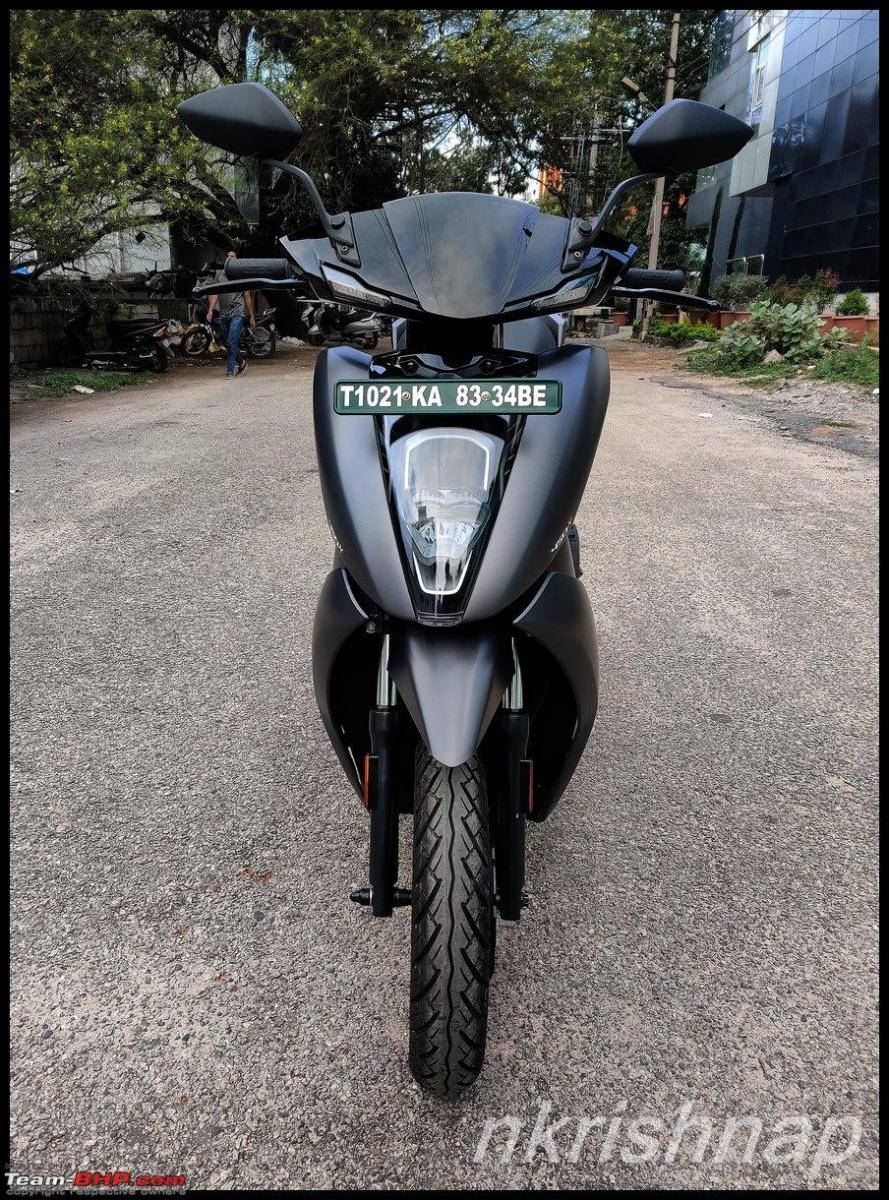
Front three quarter:
The sleek design pattern continues on the sides too:
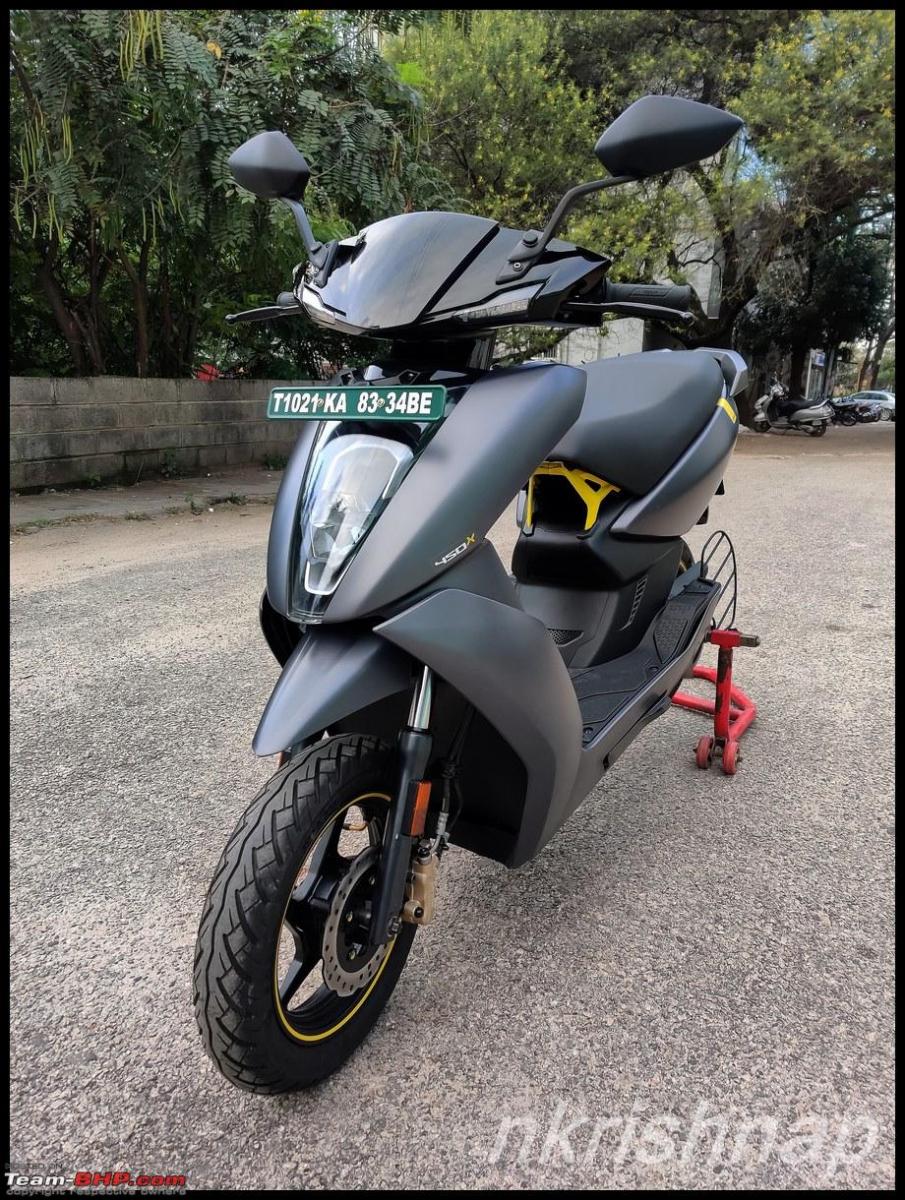
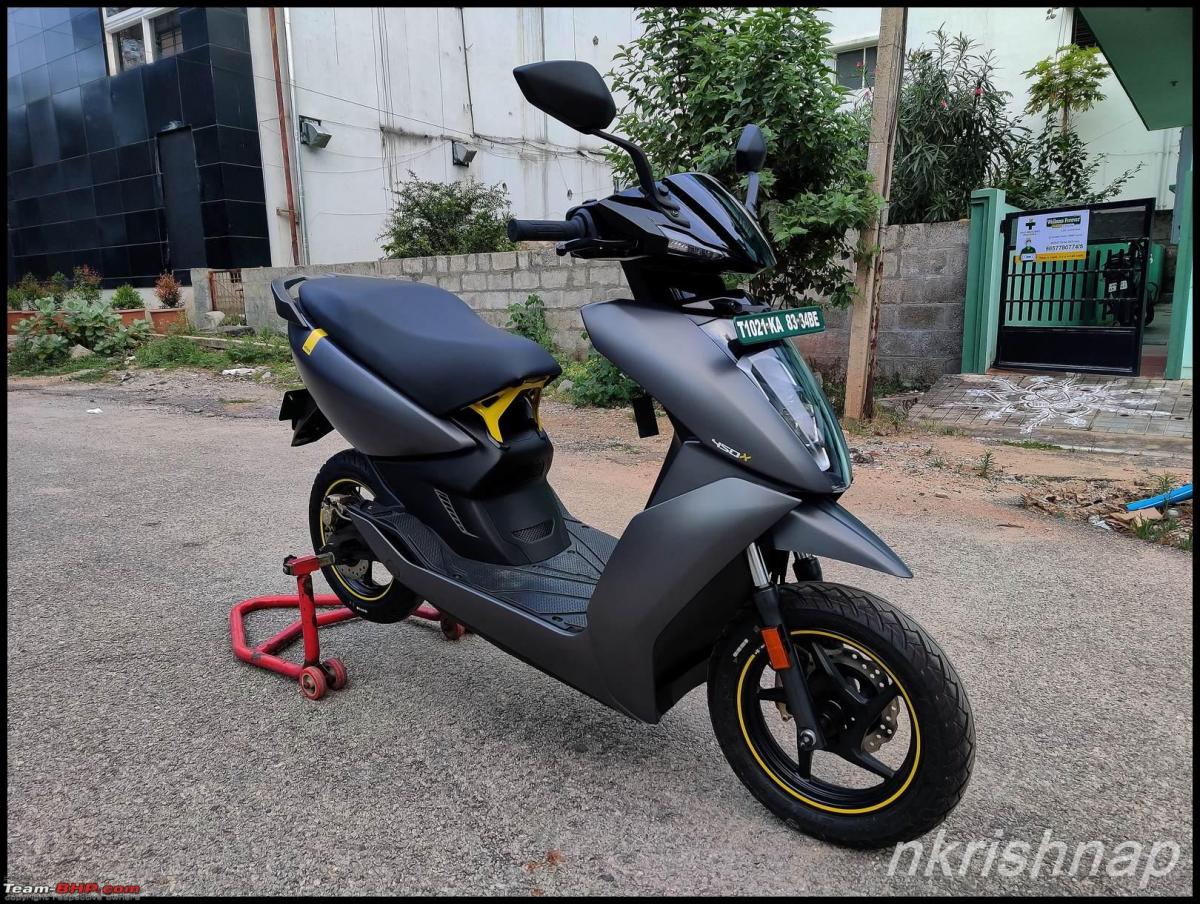
Side:
Notice the subtle yellow color for the frame, rear suspension, a sticker on the panels and pin stripes on the wheels which go well with the matte finish grey.

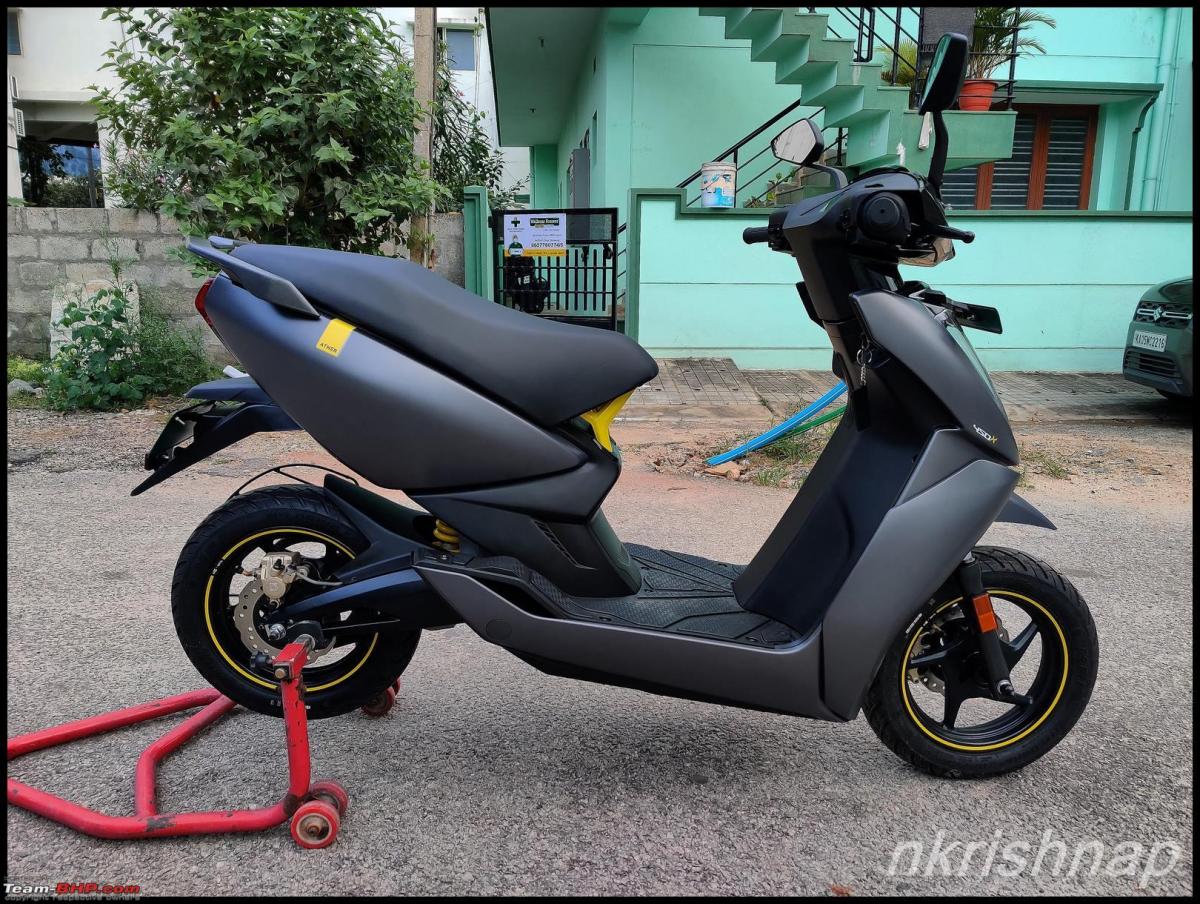
Rear three quarter:
The rear three quarter is more subdued compared to the front. The saree guard is an eye sore. wondering should I just remove it.
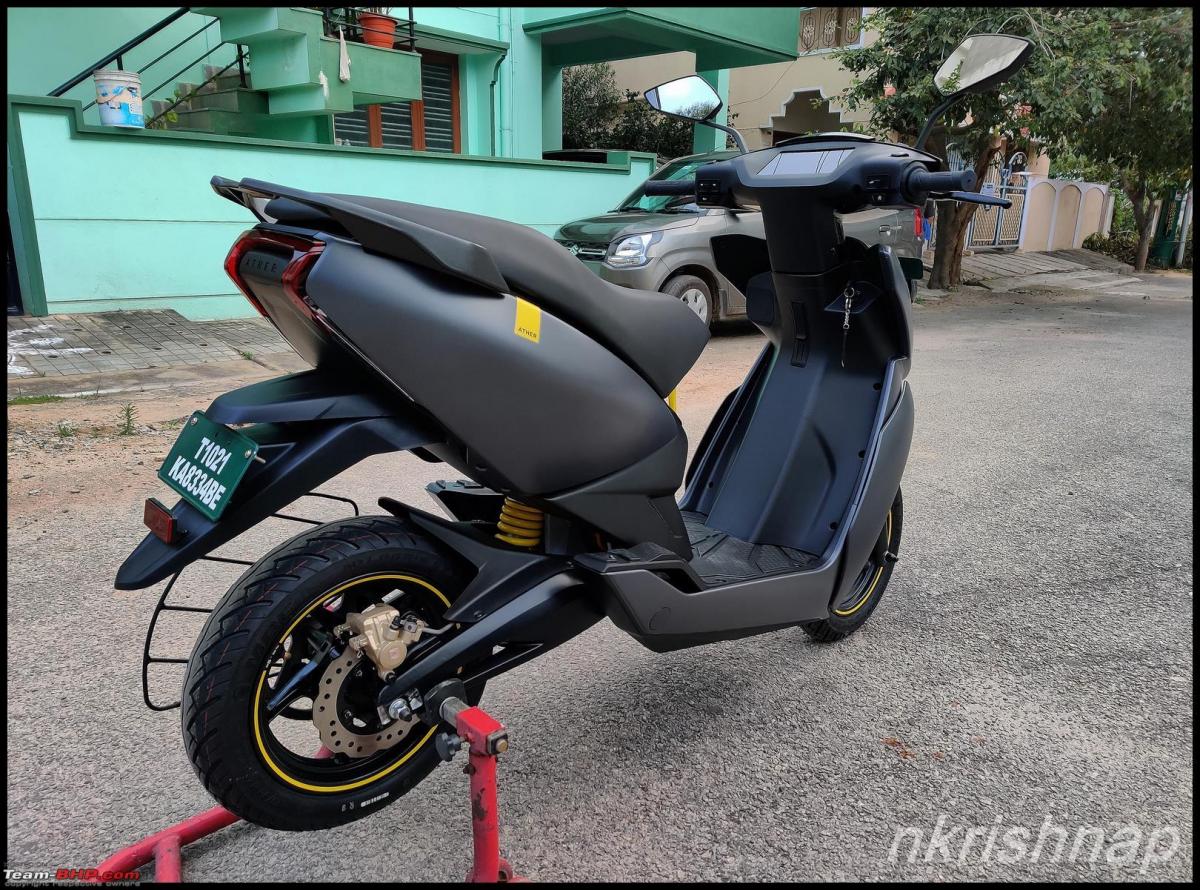
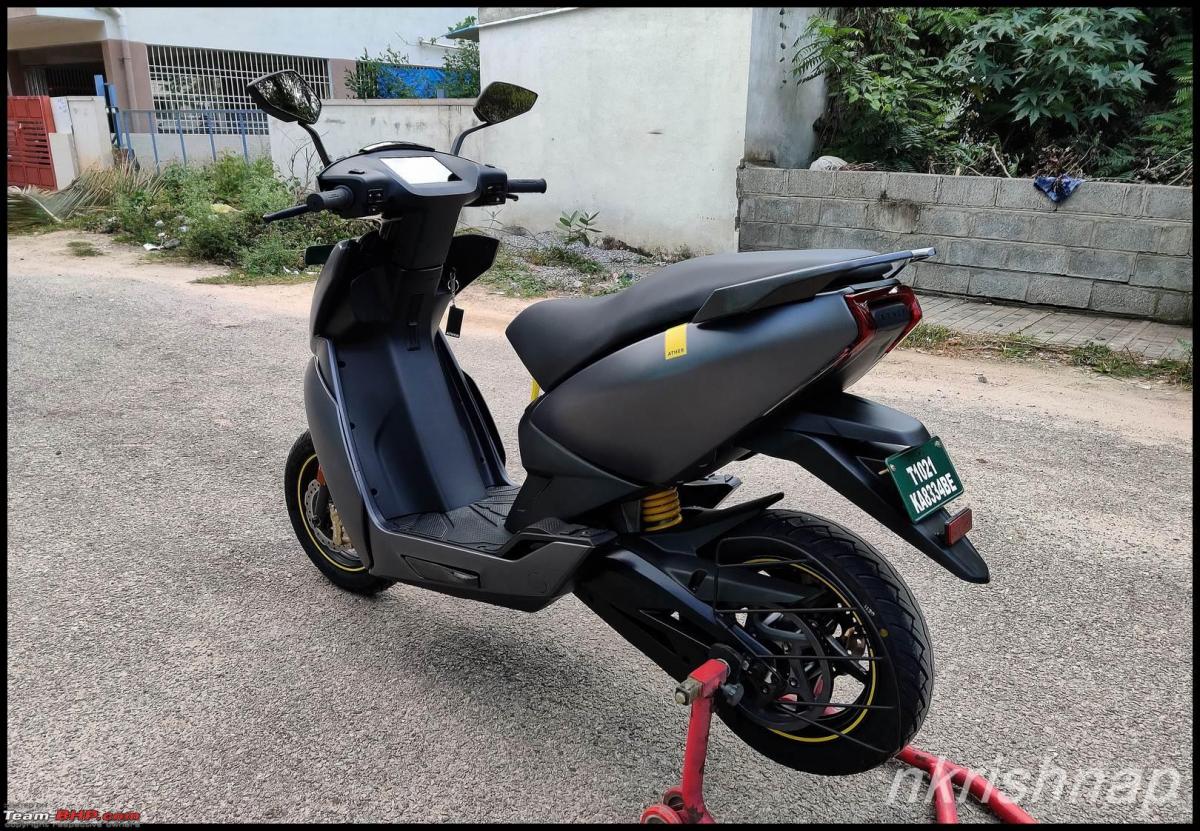
Rear:
The tail lamp, brake lights, rear indicators are all LED housed in an inverted U shape:
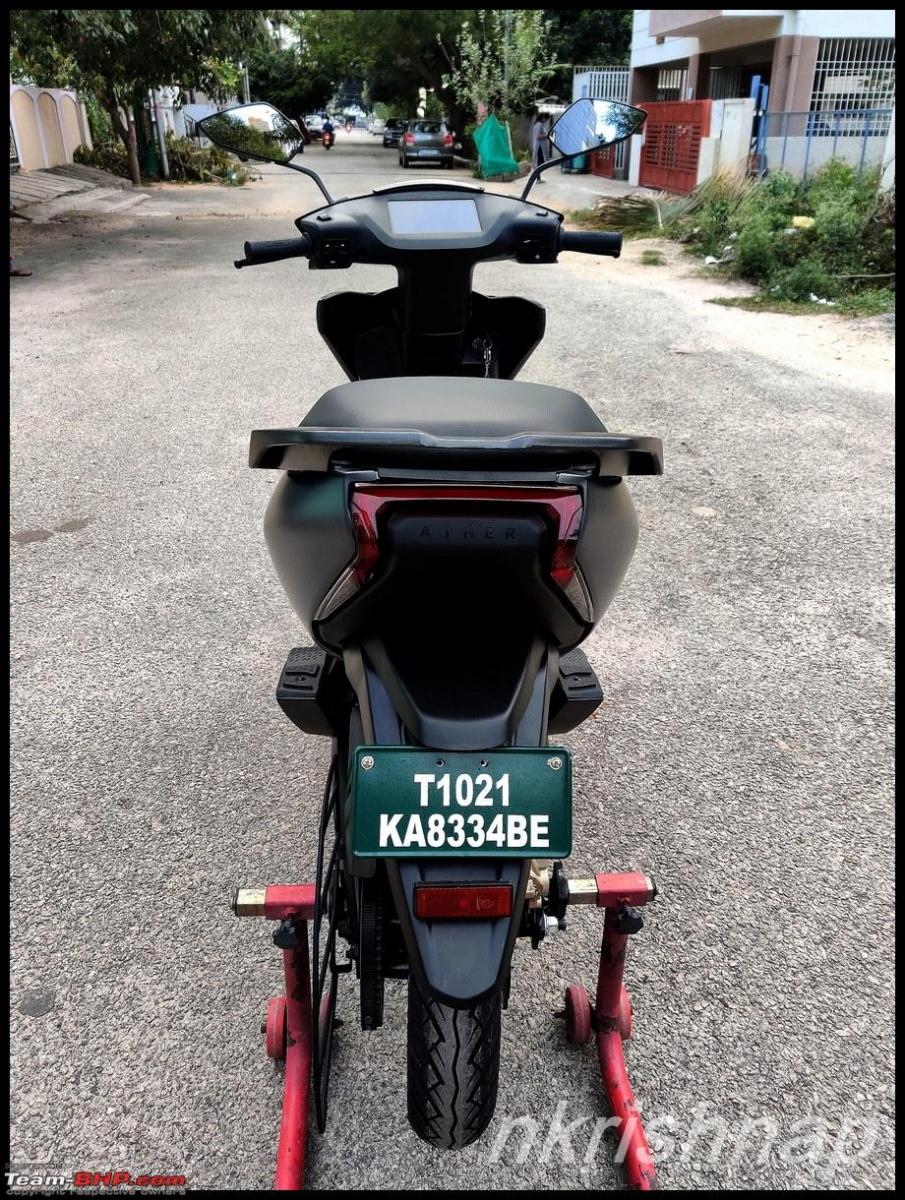
Switch gear area:
Quality of the switches are nothing to write home about:
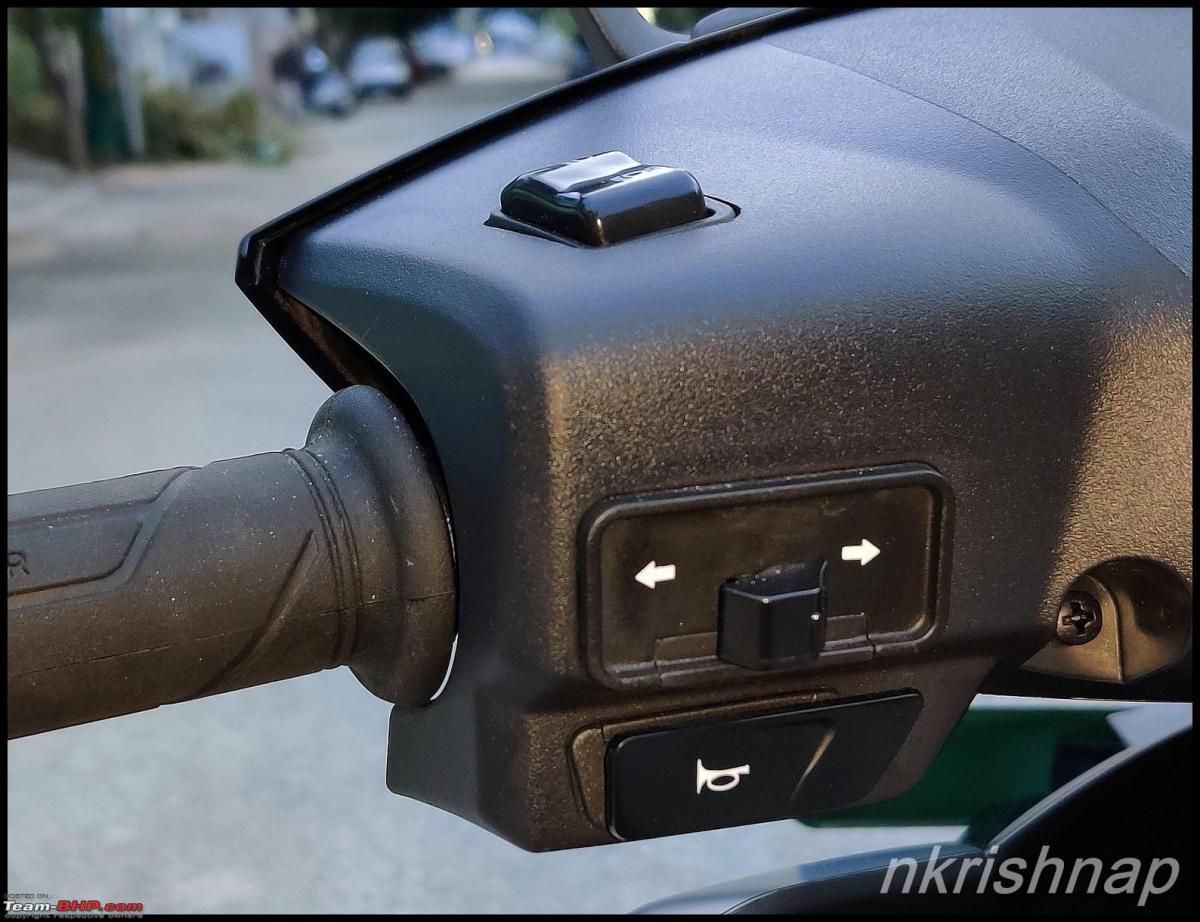
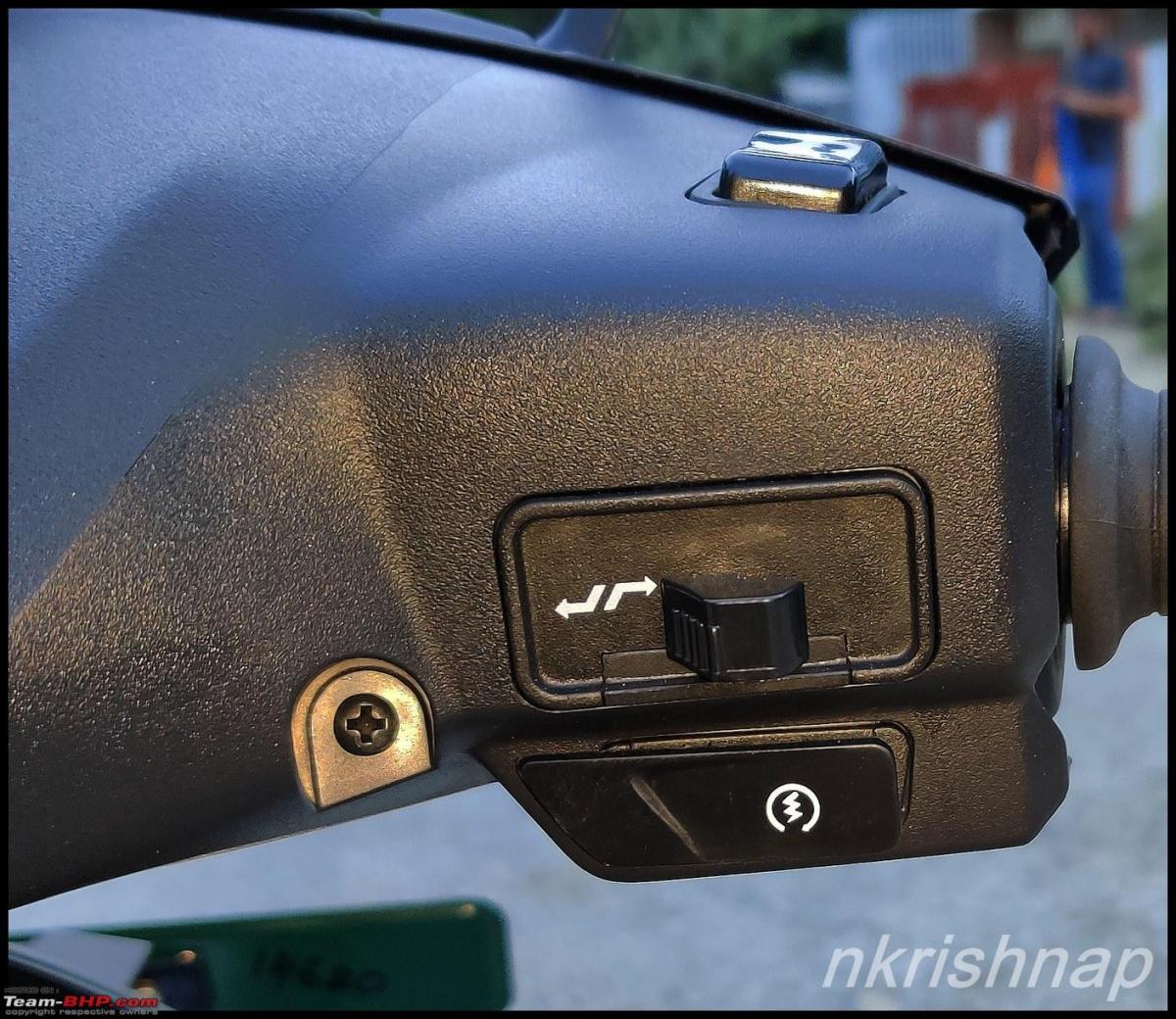
Centte console and storeage:
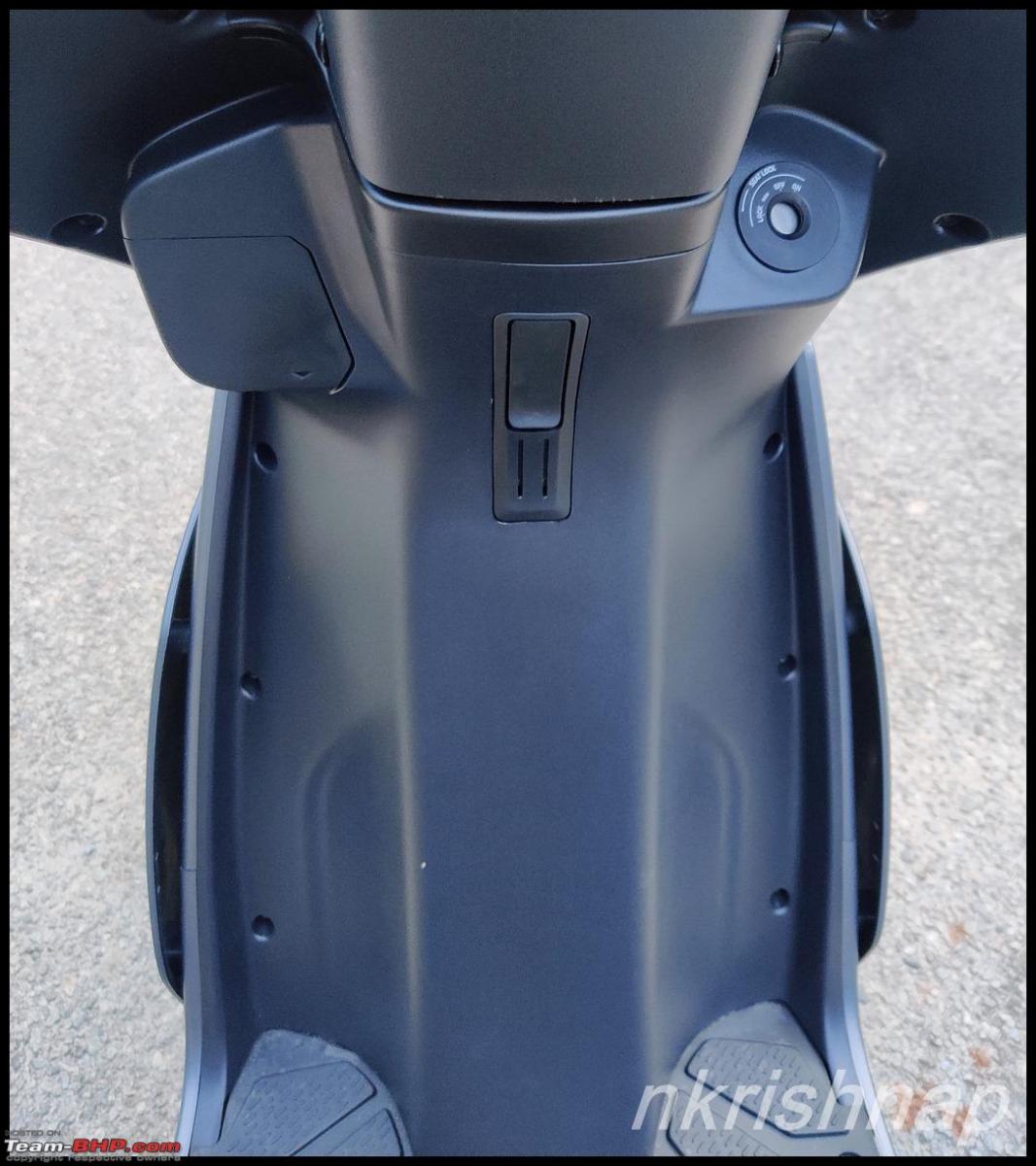
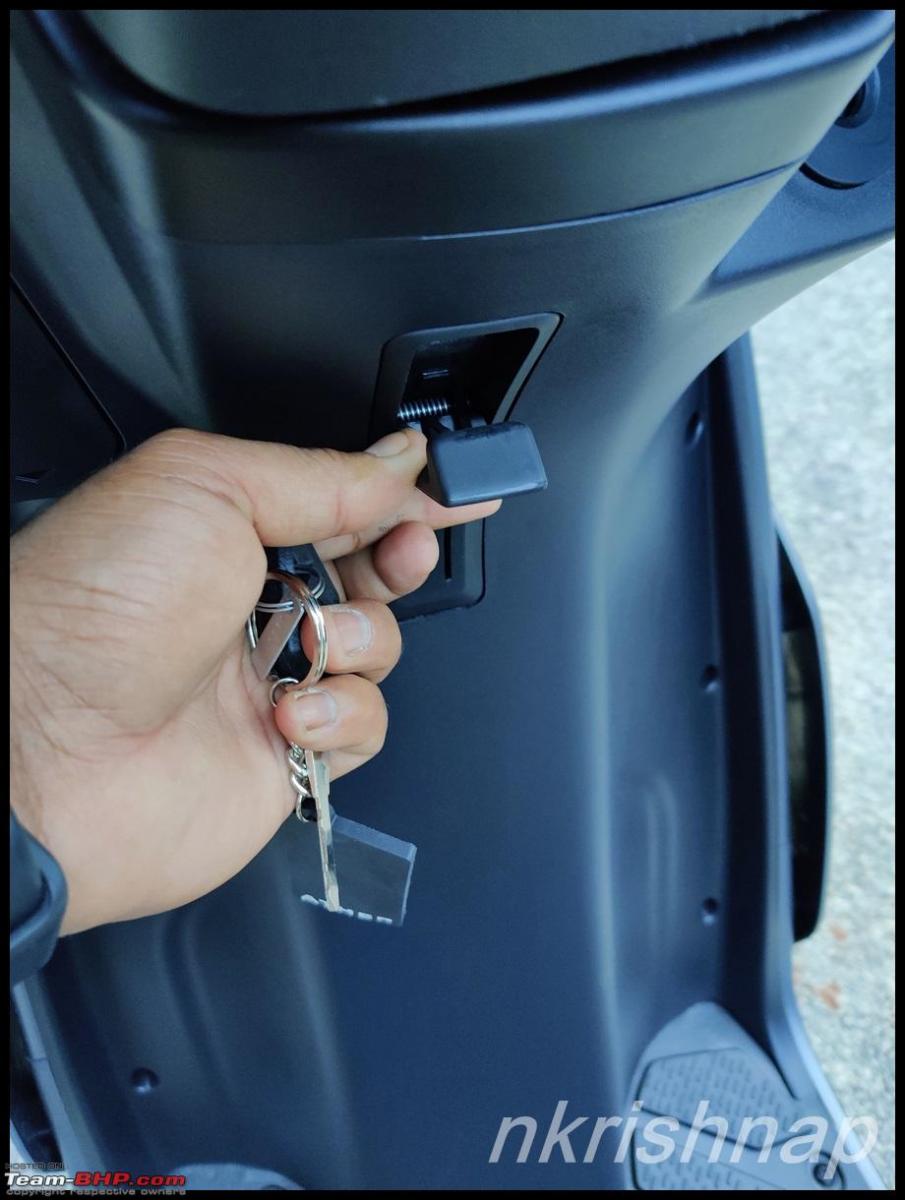
Front discs and telescopic folks:
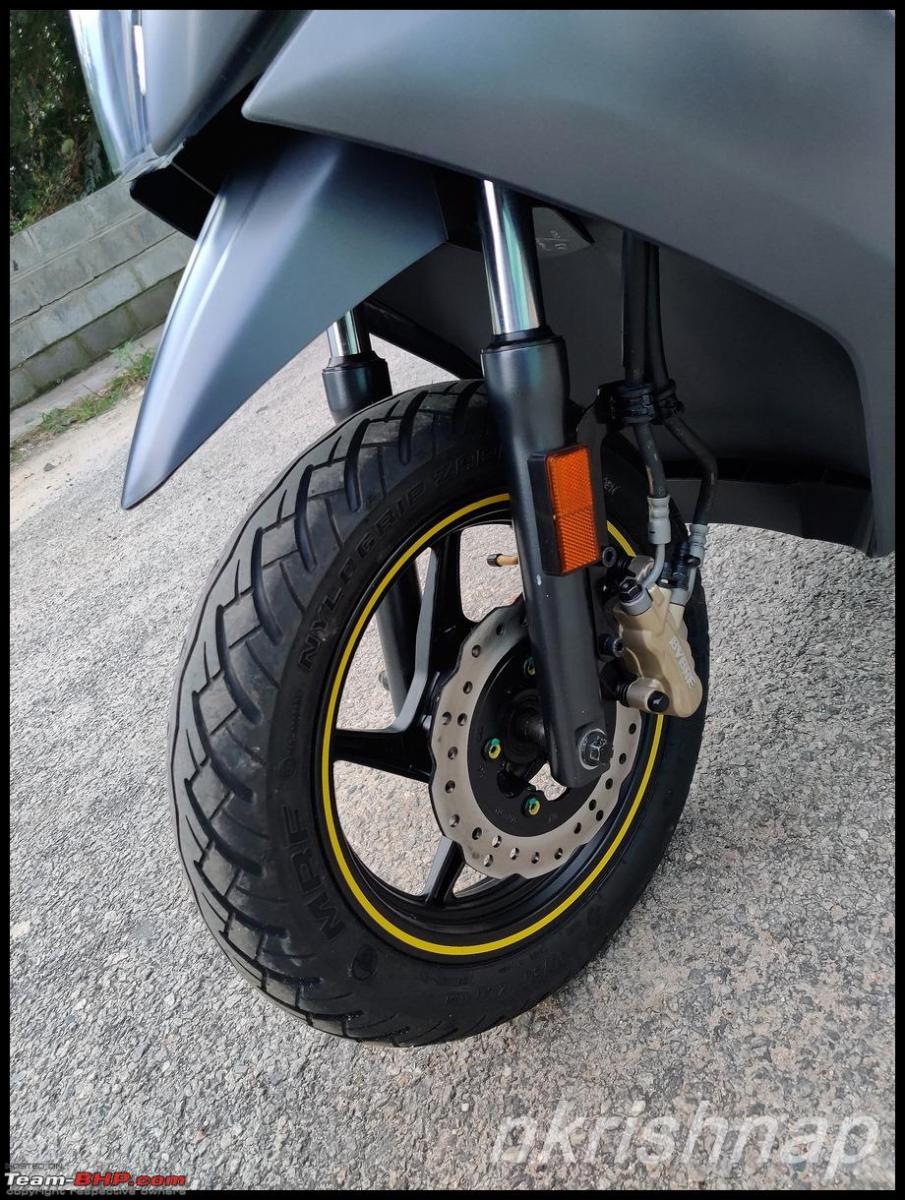
Key slot:
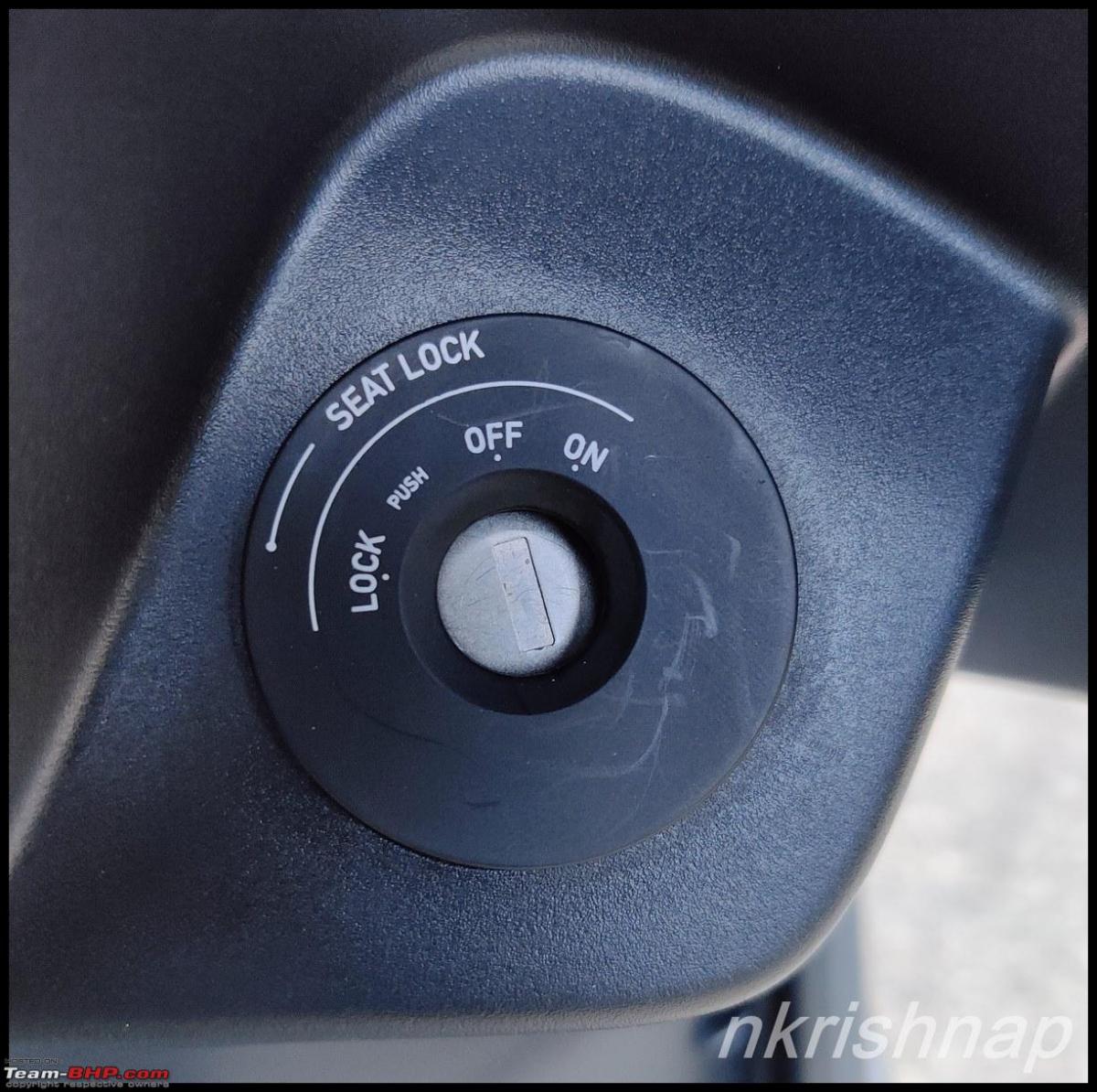
Belt drive:
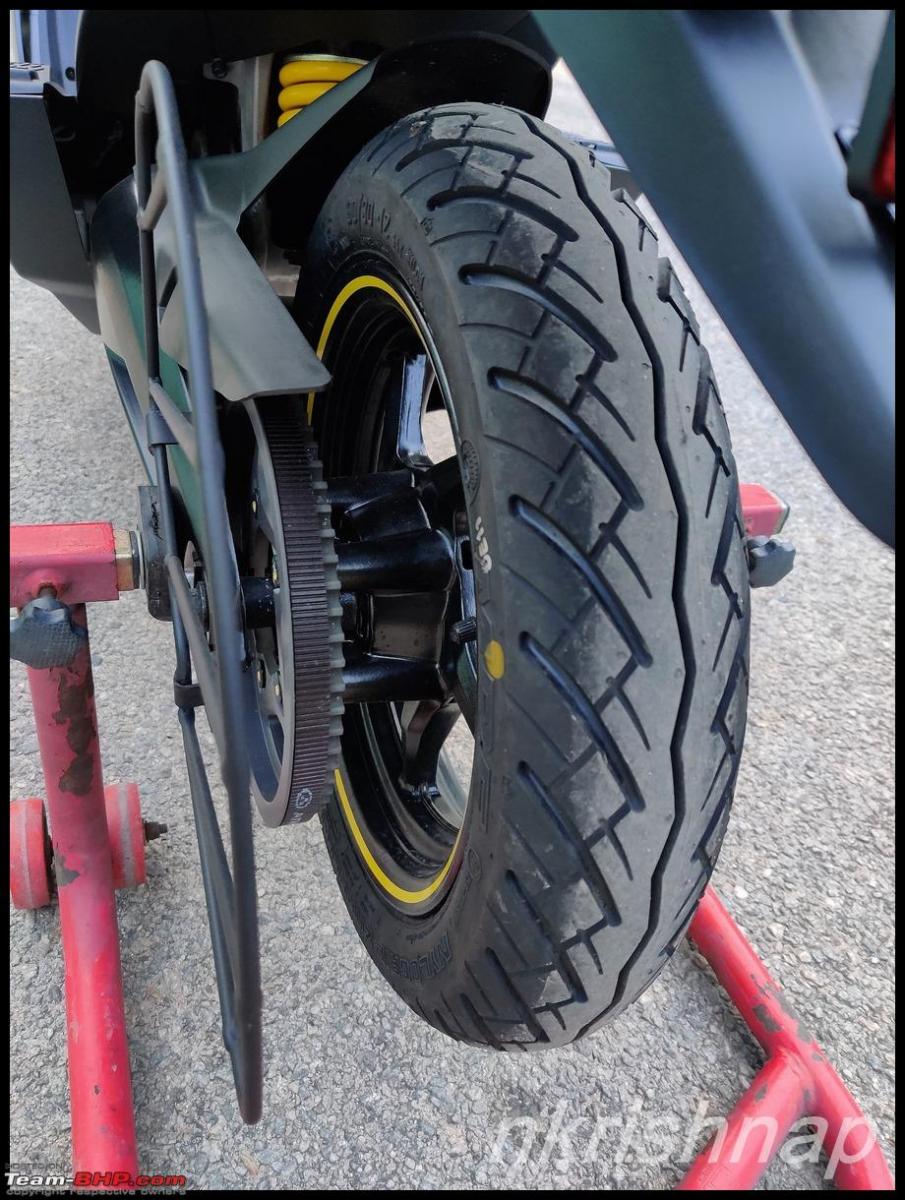
Continue reading BHPian nkrishnap's review of his Ather 450X e-scooter for BHPian comments, insights and information.
News
USA: Ford & Purdue patent new EV charging tech
Ford hopes that the new technology will allow EVs to charge almost as fast as filling up a tank of fuel.
American car giant, Ford has partnered with Purdue University to patent a new technology that could significantly bring down the charging times of electric vehicles.
According to reports, the new technology focuses on heat management. This comes in the form of a special liquid cooling process that mitigates overheating of the cables, allowing for higher currents to pass through - in turn, reducing charging times for EVs.
The new liquid-cooling technology allows the cooling agent to change phase from liquid to vapour, improving its heat dissipation capabilities. In addition to this, the new technology also makes use of special cables, capable of handling the higher surge of currents.
Ford hopes that the new technology will allow EVs to charge almost as fast as filling up a tank of fuel. However, the technology is still a couple of years away from even its prototyping stage.
News
Ather Energy introduces Ather Grid 2.0 fast-charging network
Ather Energy has already started the installation of the Ather Grid 2.0 in Bangalore and Chennai.
Ather Energy has introduced the Ather Grid 2.0 fast-charging network. The new infrastructure is built on the current generation of Ather Grid but has enhanced features.
The Ather Grid 2.0 has been designed to support future fast-charging capacity, improved safety features and faster bug resolution. Ather Energy can install new features and fix bugs on the Grid 2.0 in real-time via OTA updates.
Thanks to Ather Grid 2.0’s modular design, the fast-charging infrastructure can be installed even in extreme environmental conditions. This design also enables field serviceability of parts with a strong emphasis on remote diagnostics.
Ather Energy has already started the installation of the Ather Grid 2.0 in Bangalore and Chennai. The fast-charging network will be available in more cities soon.
Spread across 21+ cities, the Ather Grid network is currently installed at over 215 locations. The company aims to increase that figure to 500 by the end of FY22 with all new installations being Ather Grid 2.0.
News
Ather Energy opens its fast-charging connector for other OEMs
An interoperable 2-wheeler fast charging platform will help lower infrastructure investments.
Ather Energy has announced that it will offer its proprietary charging connector to other OEMs. This will pave the way for an interoperable 2-wheeler fast charging platform and help lower infrastructure investments.
According to the company, having a common connector that can be used across different products will help maximize the usage and efficiency of the charging infrastructure. It would also give customers access to Ather's 200+ fast chargers, thus reducing range anxiety.
Ather Grid has been providing normal-speed charging options for electric 2-wheelers and 4-wheelers free of cost. Opening up the connector technology would allow all EV owners to use any of its fast-charging stations across the country.
Ather Energy believes that there is a need for a new connector standard for fast charging. CHADEMO and CCS standards for electric 4-wheelers are not feasible for 2-wheelers. Therefore, the company developed a connector that integrates both AC and DC charging capabilities. It is suitable for 2 and 3-wheelers and has the ability of CAN 2.0 communication with control and proximity pilot.
Tesla, which is also planning to enter the Indian EV space, uses a proprietary connector. Earlier this year, the company announced that it would open its fast-charging network for other EV users. However, non-Tesla vehicles would require an adapter to connect to the 'Supercharger'. The company currently has the world's largest fast-charging network with over 25,000 Superchargers.
Pages



